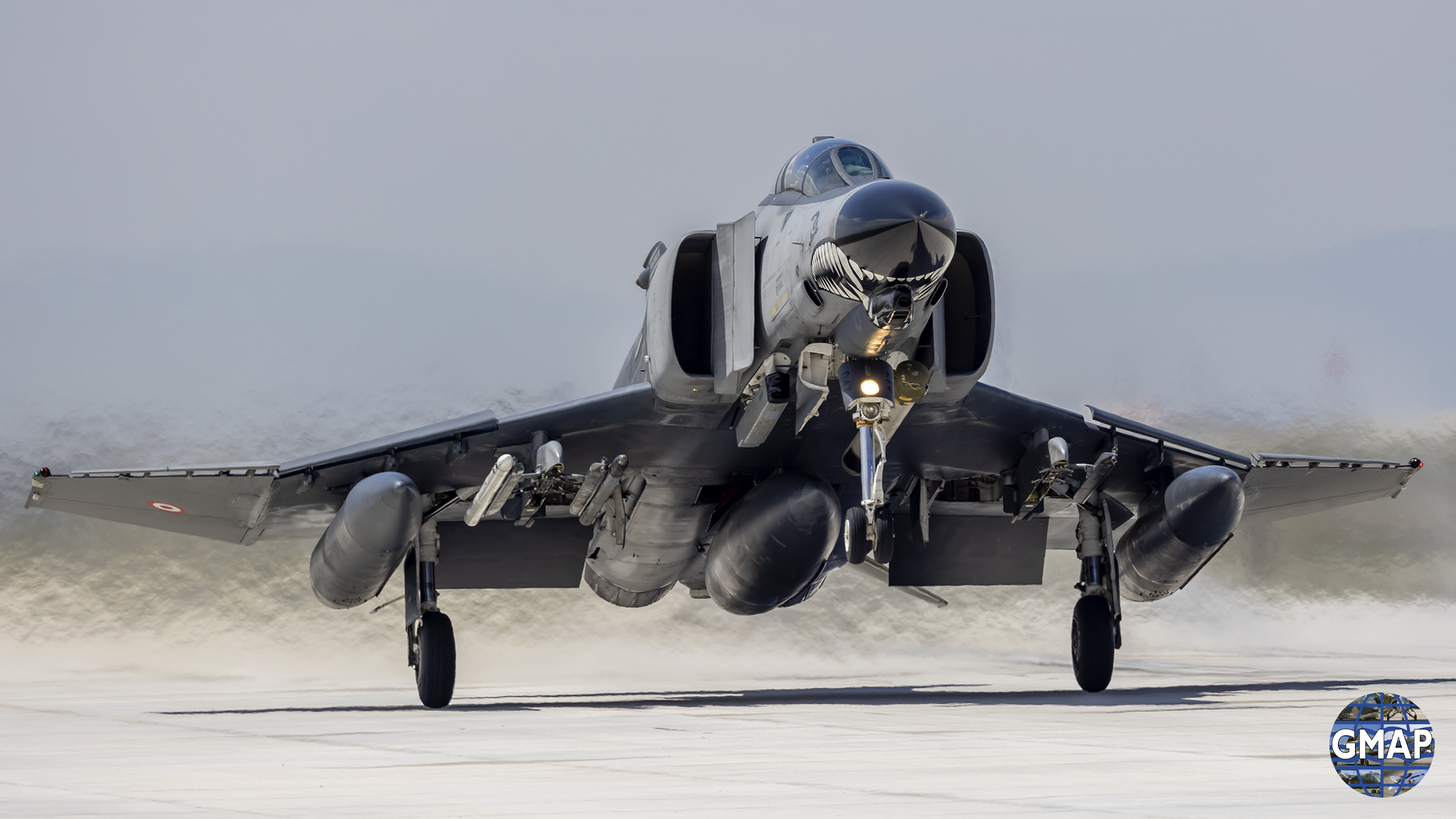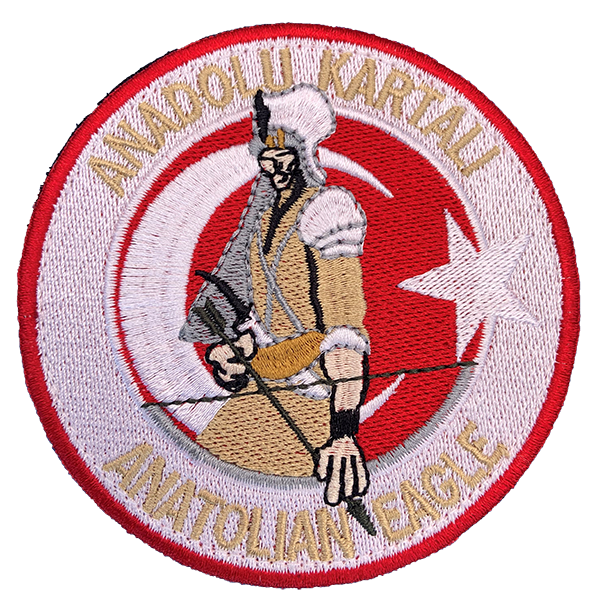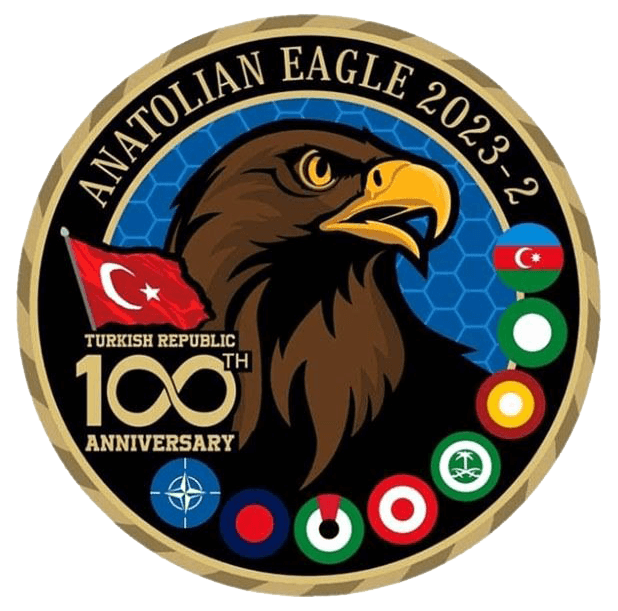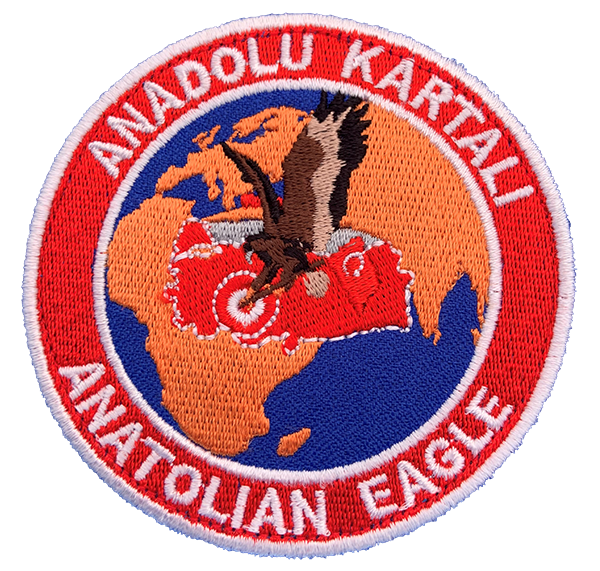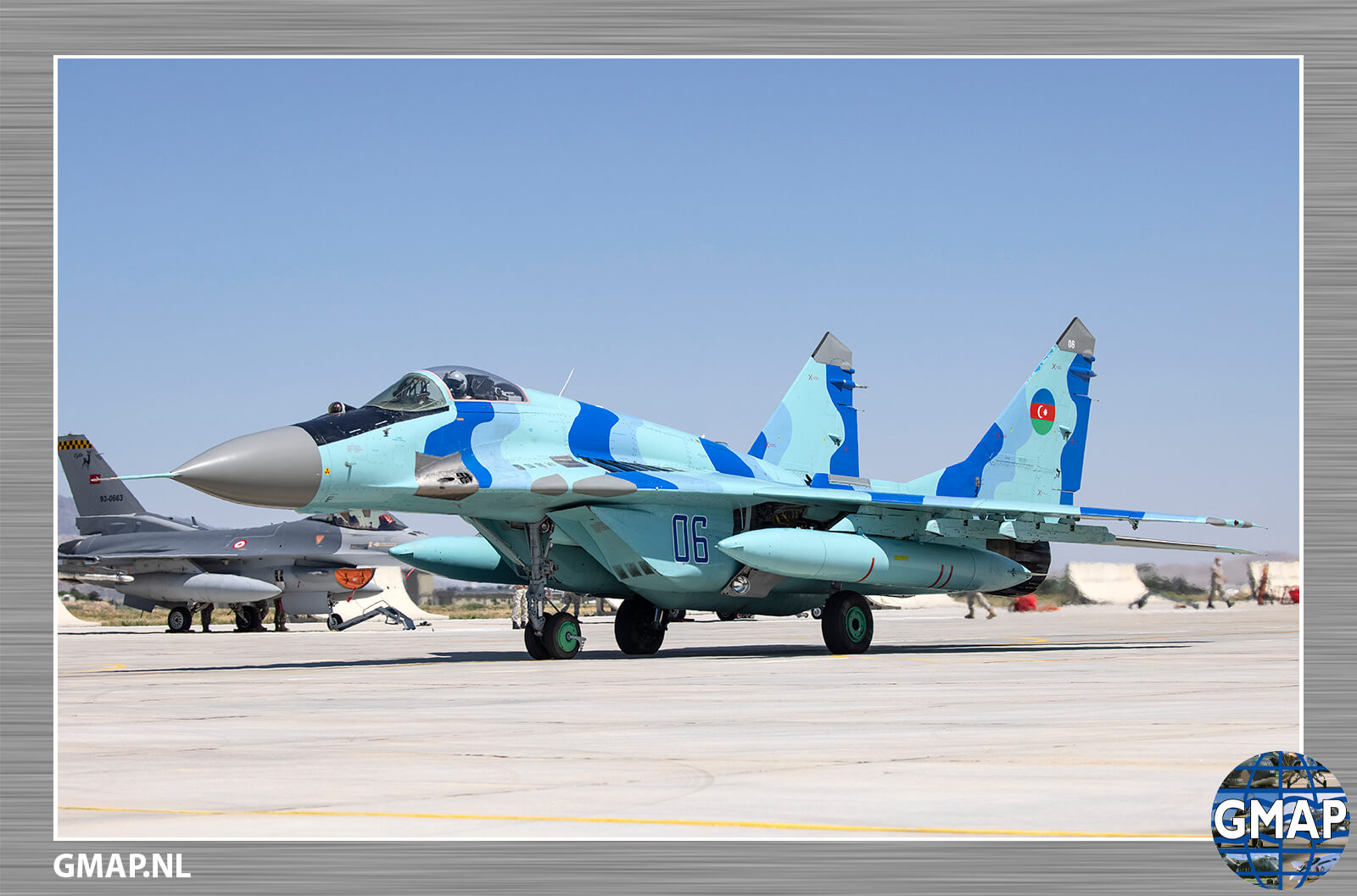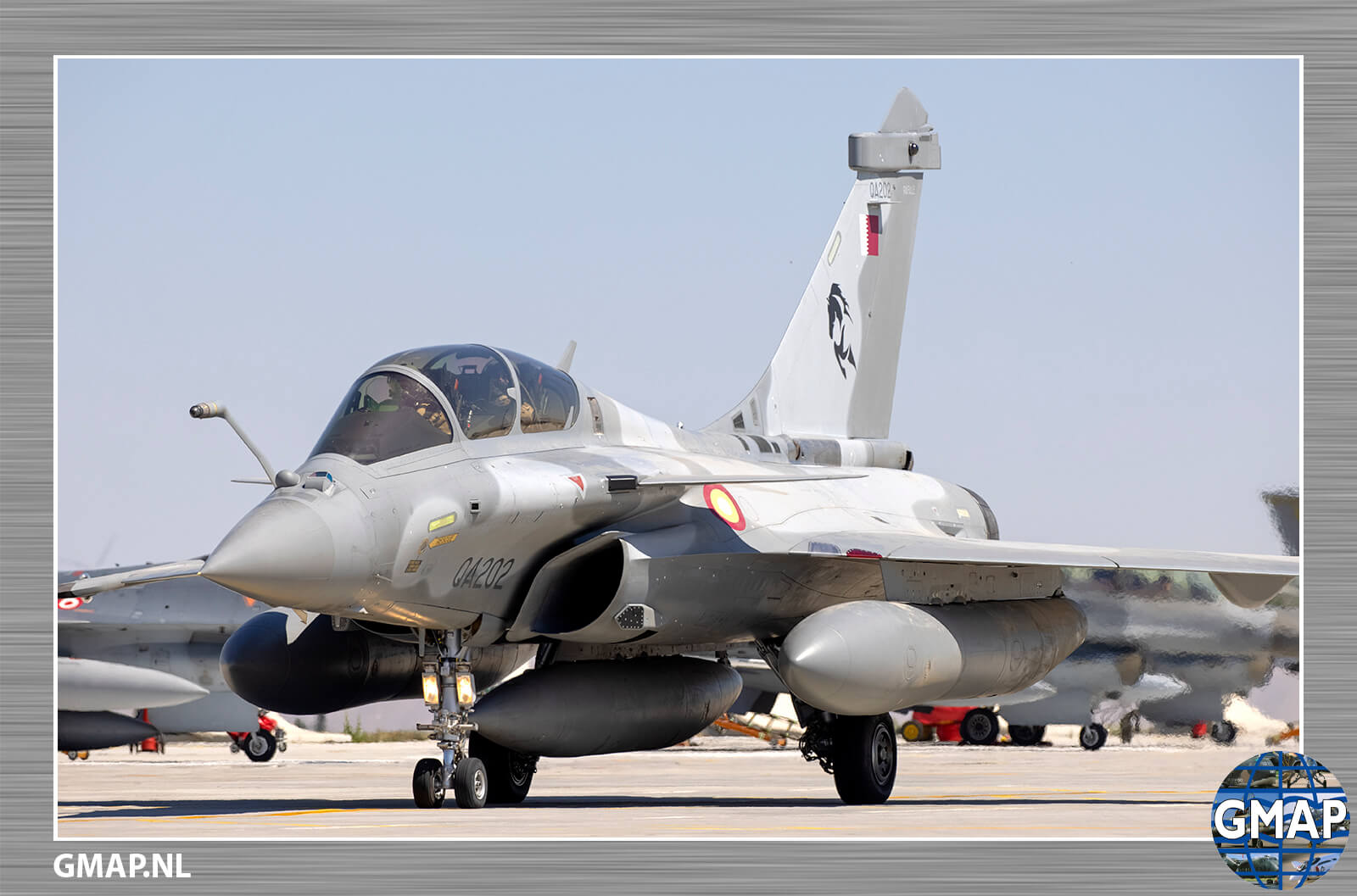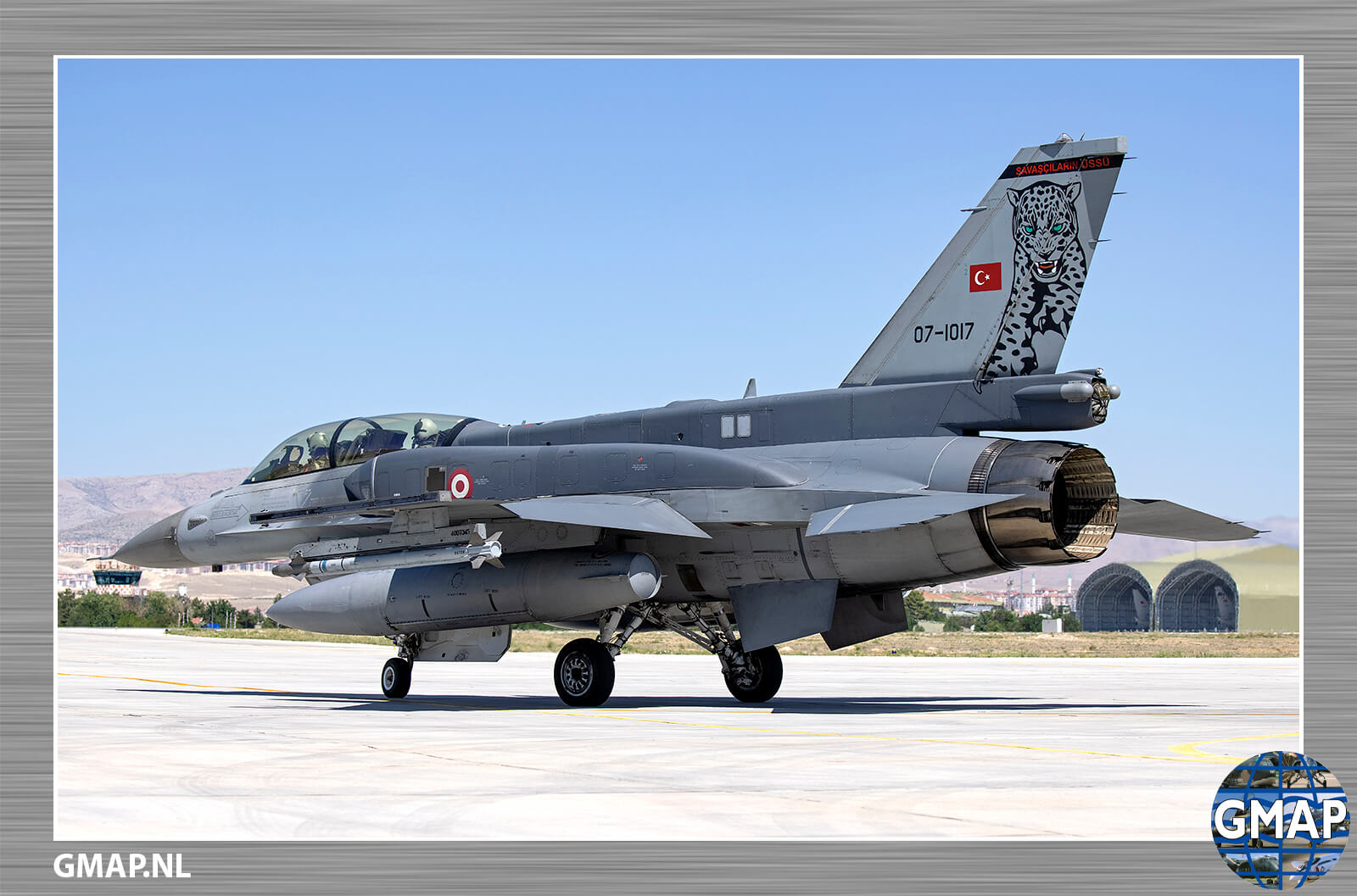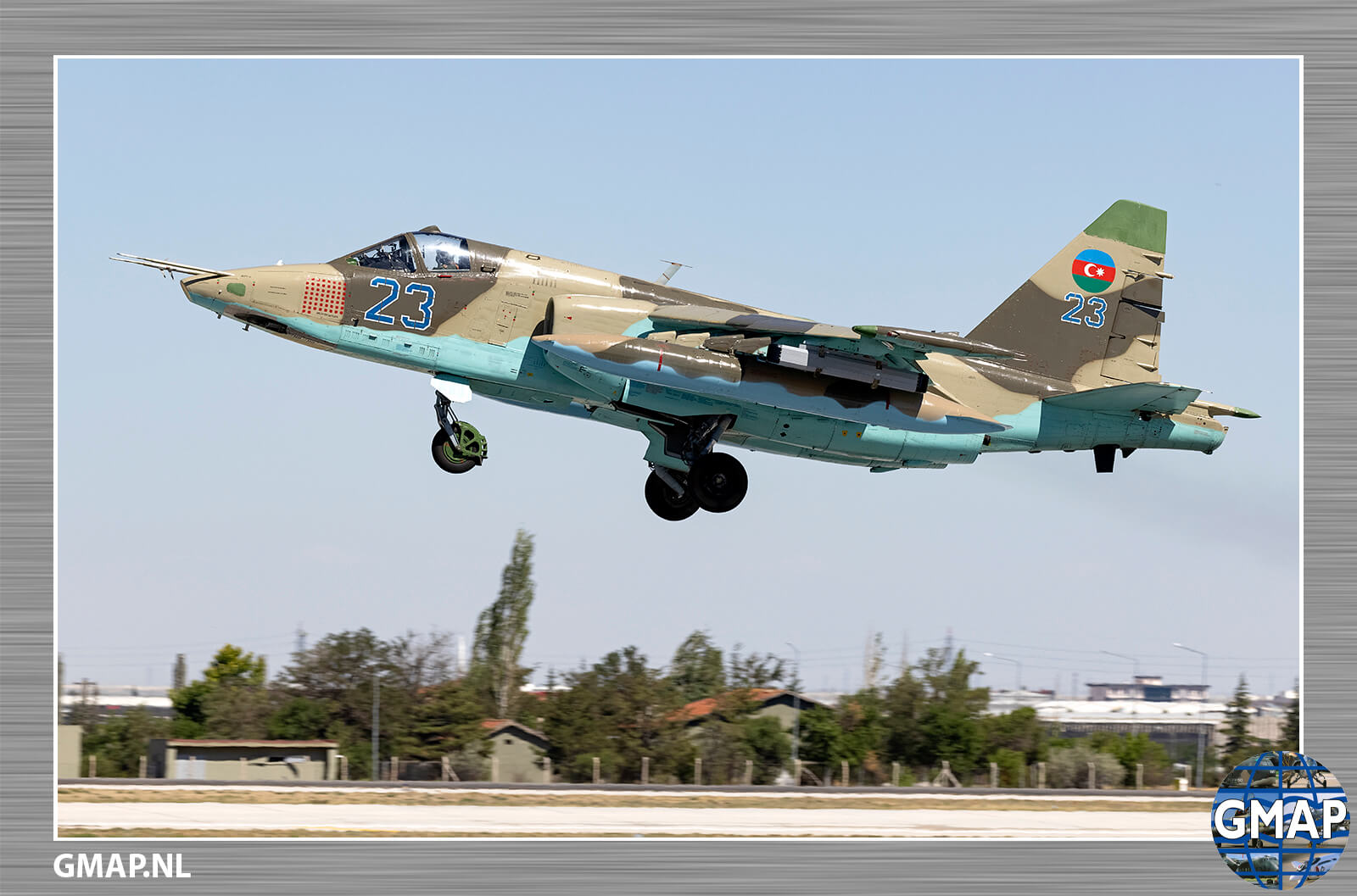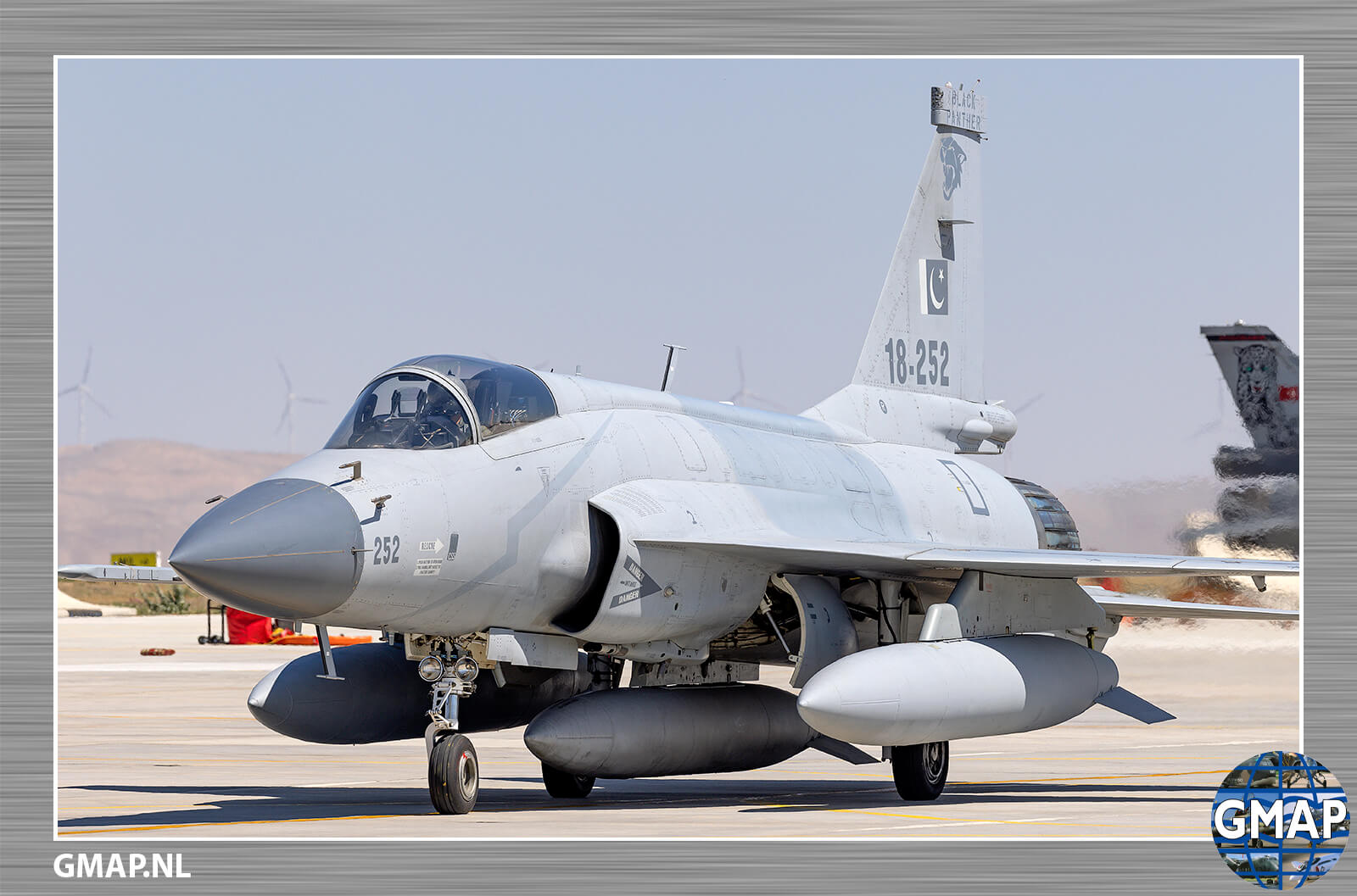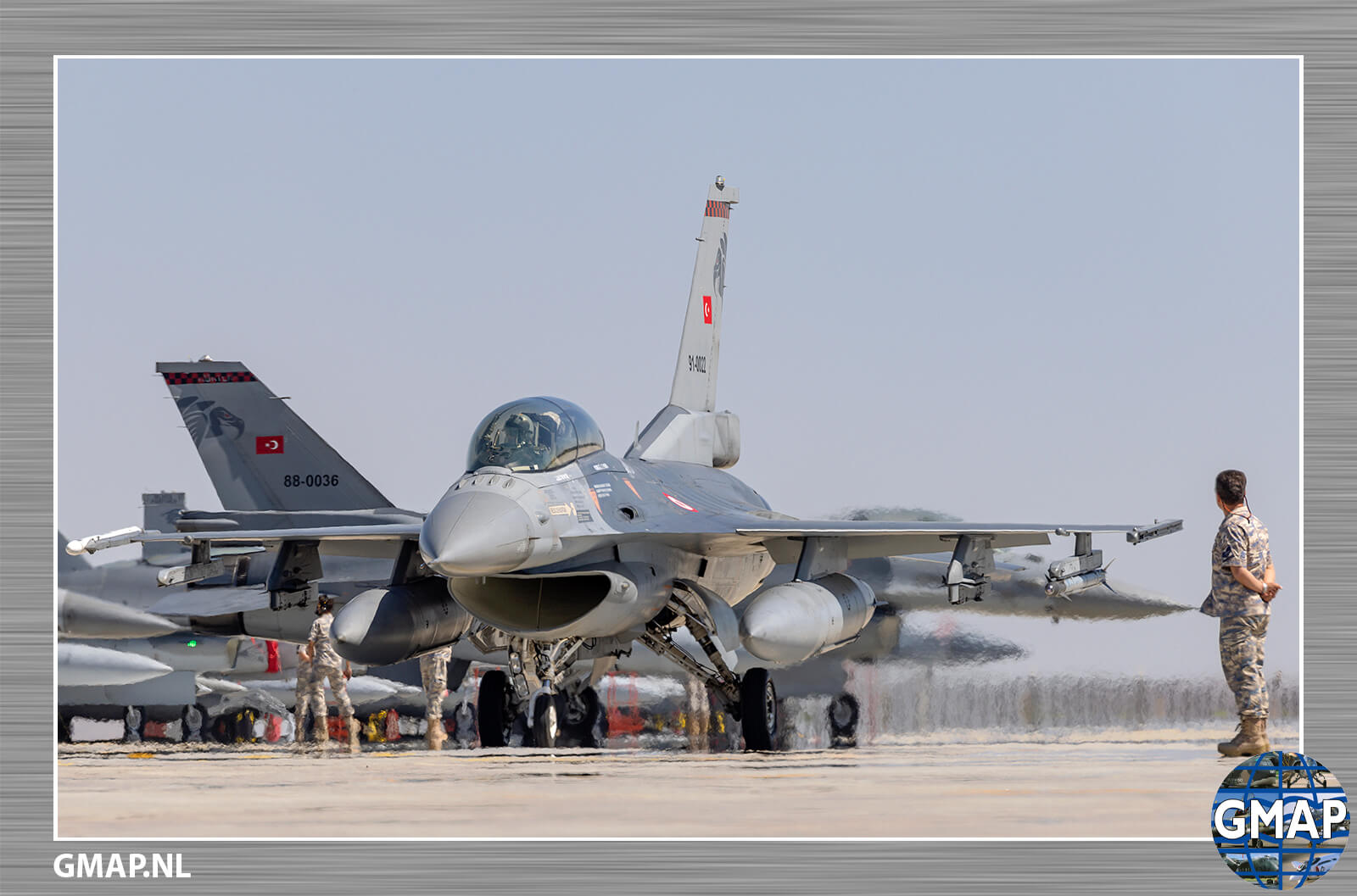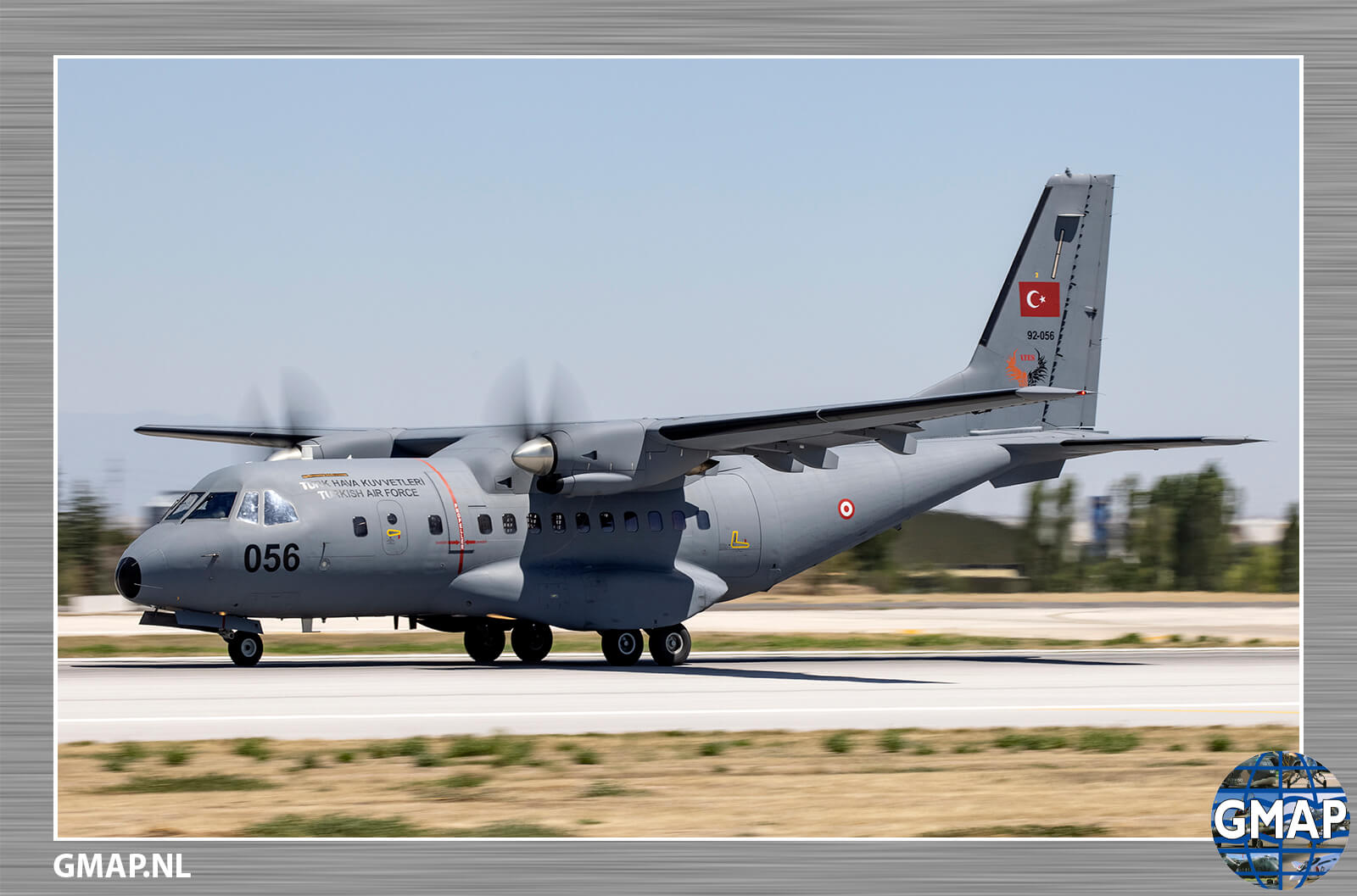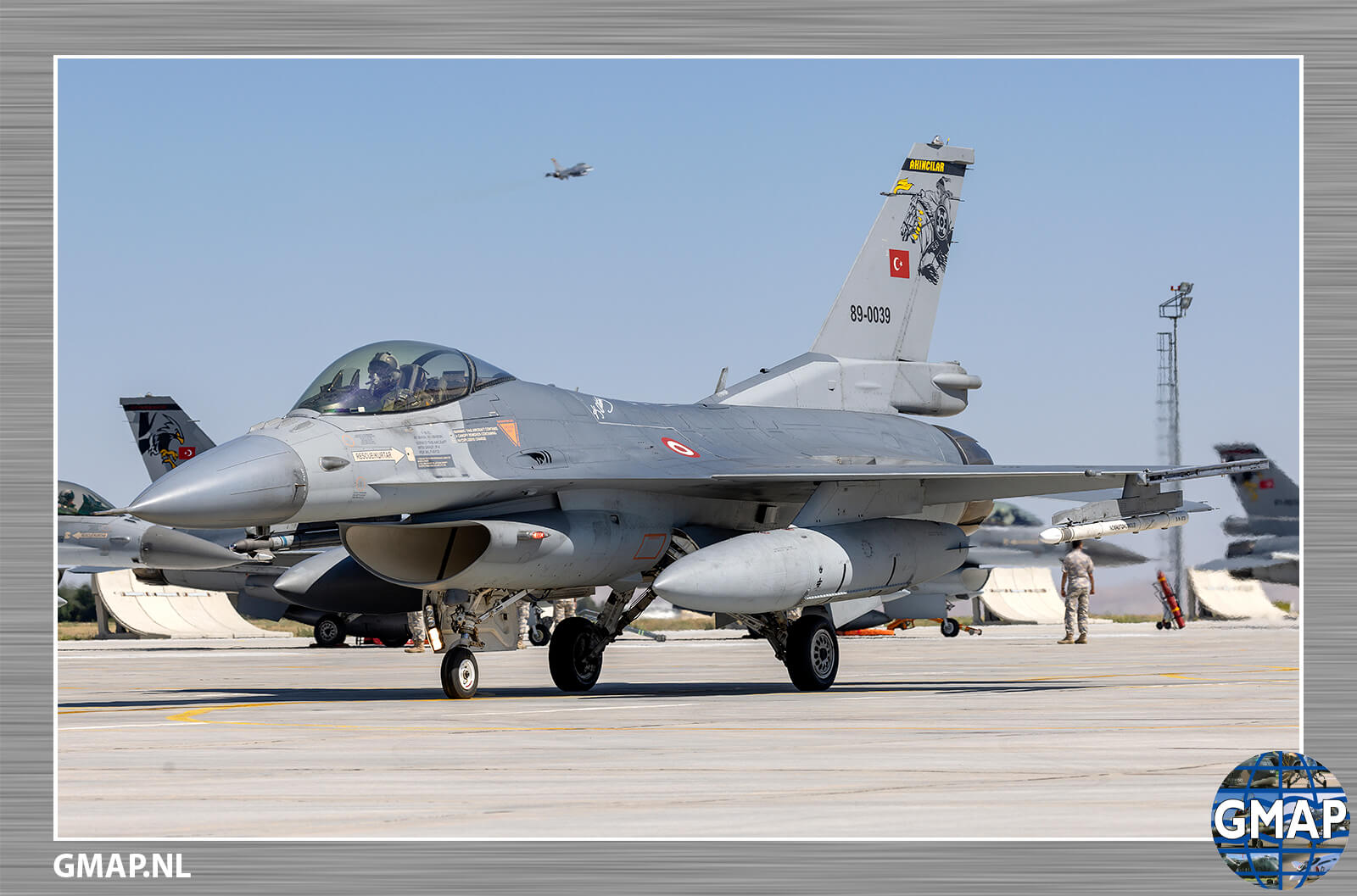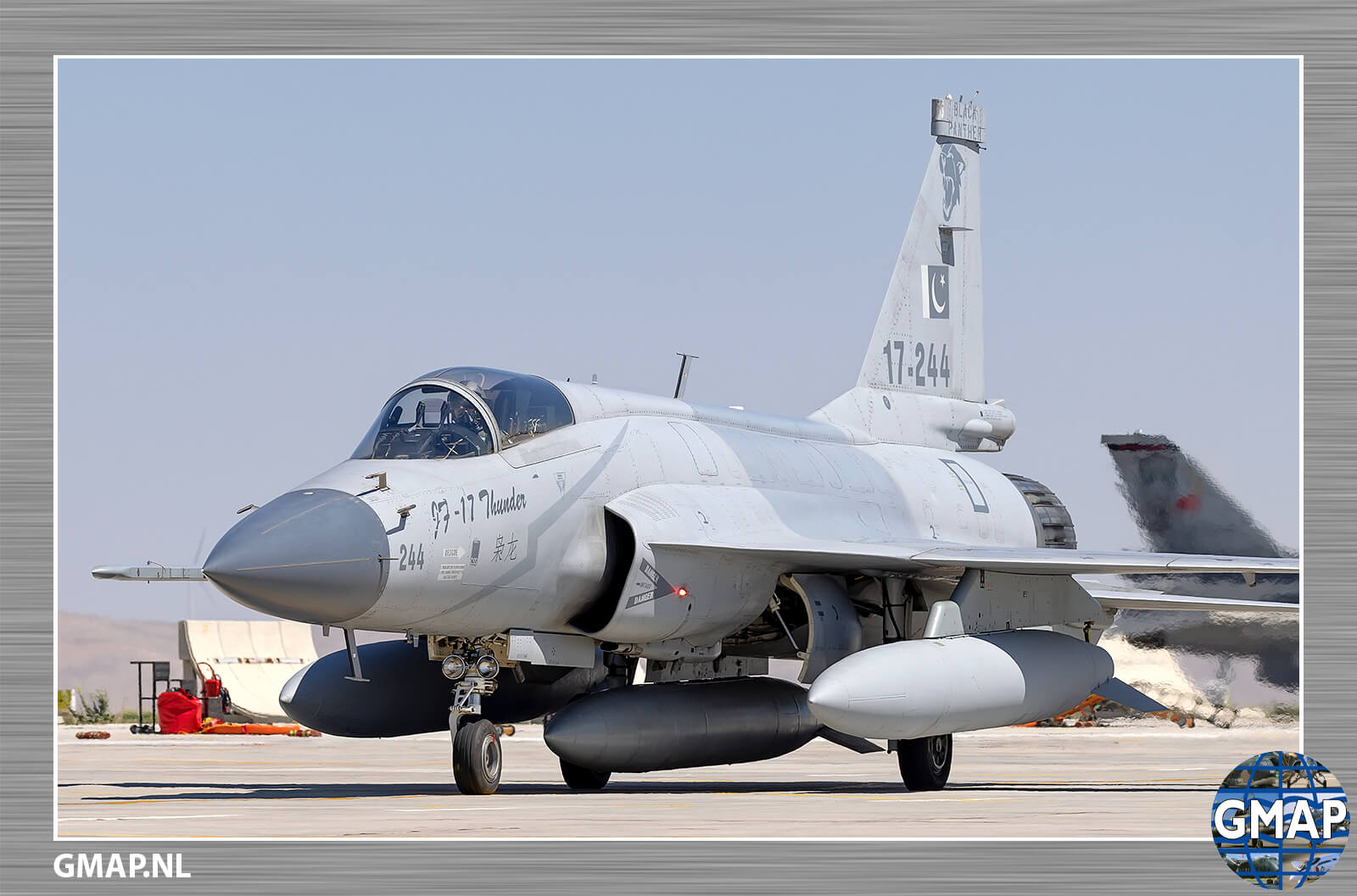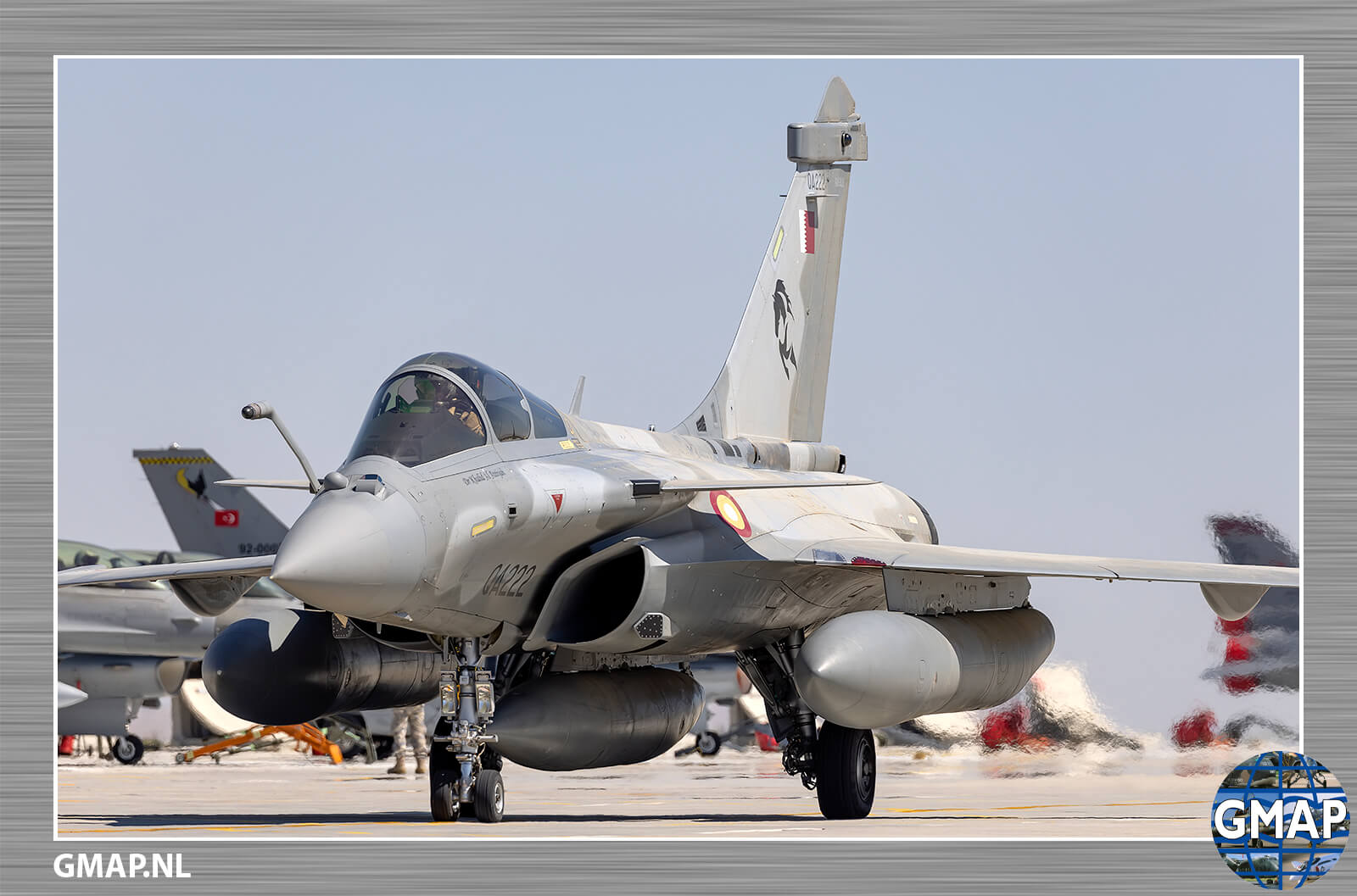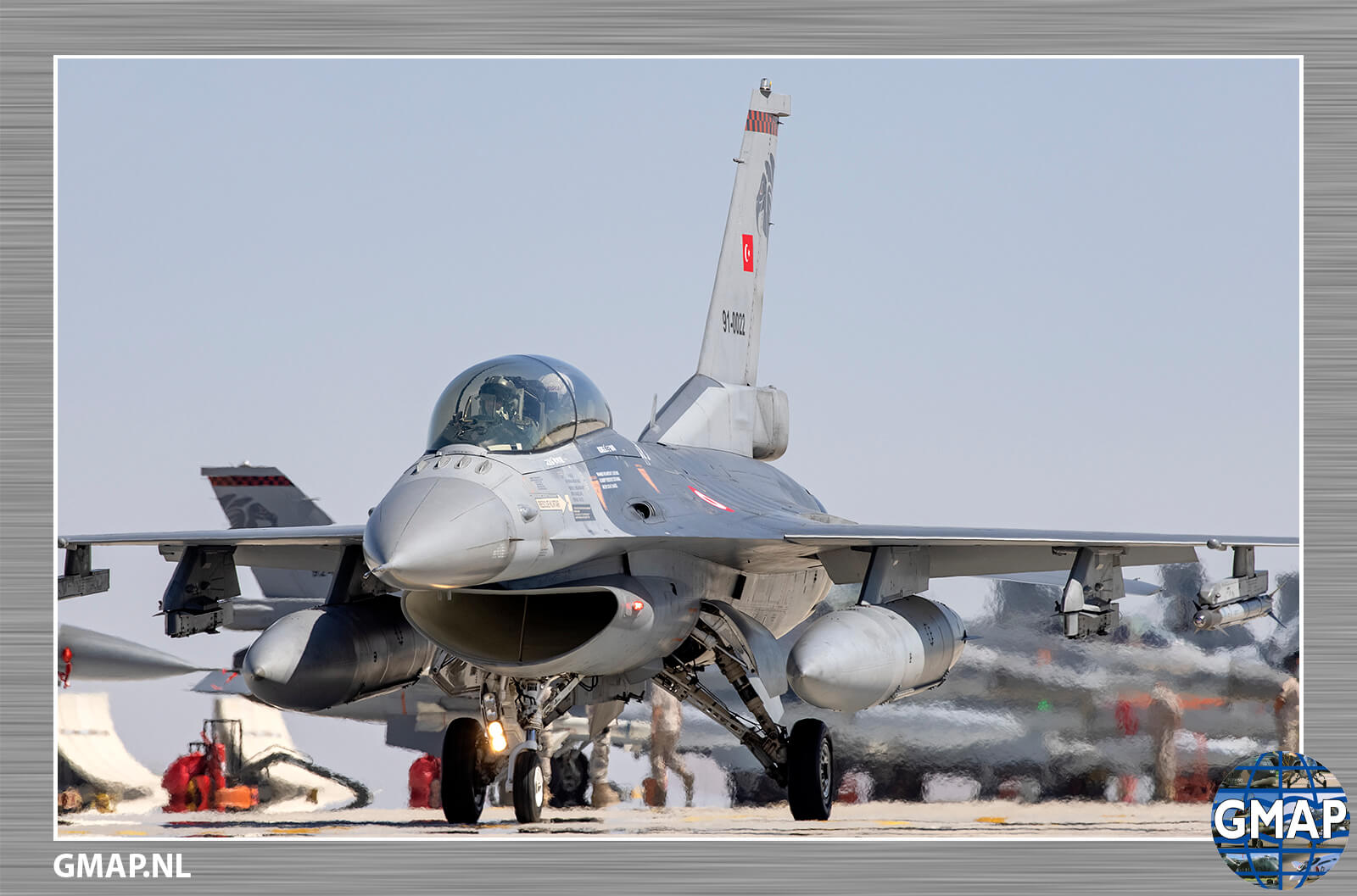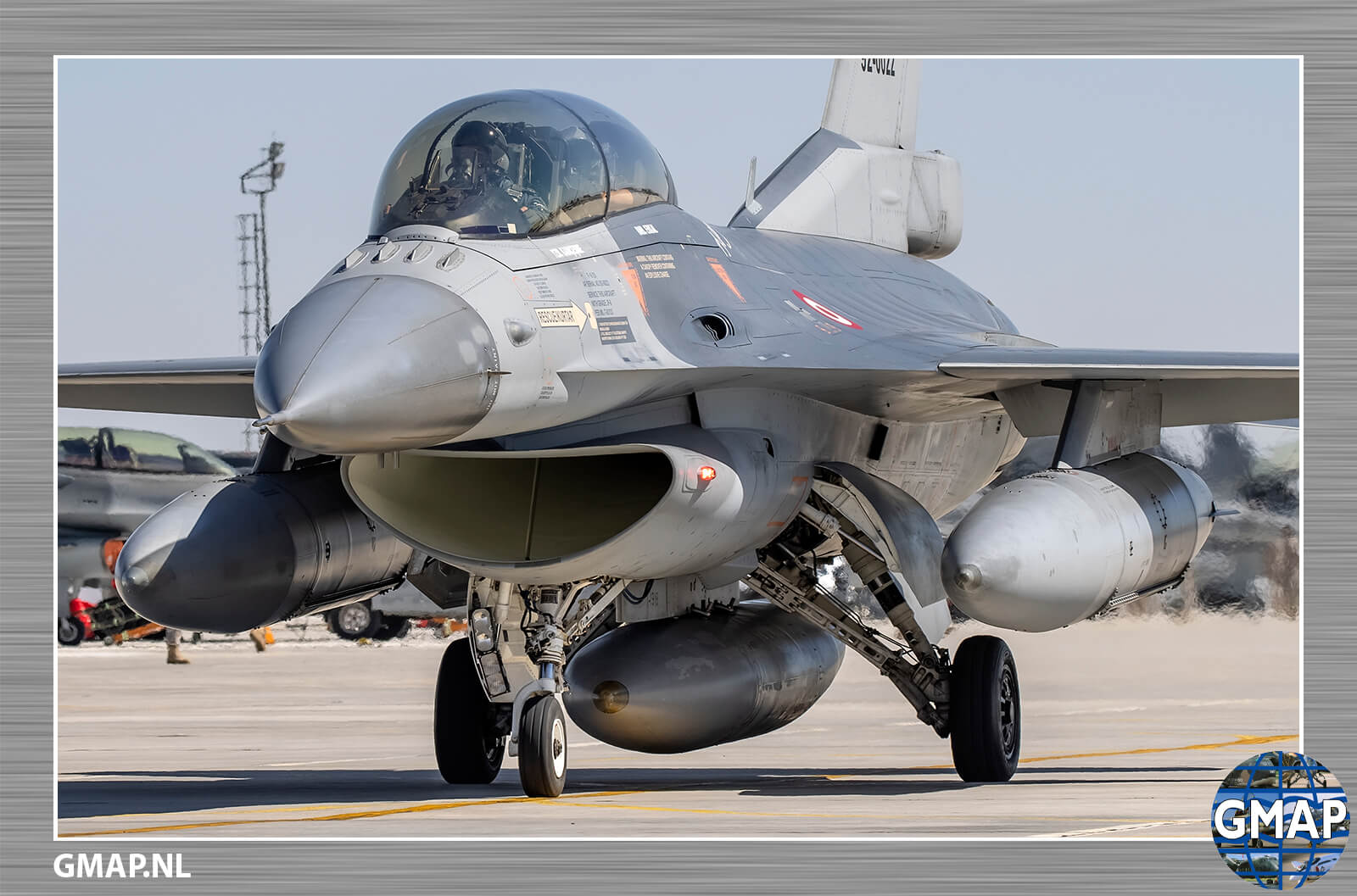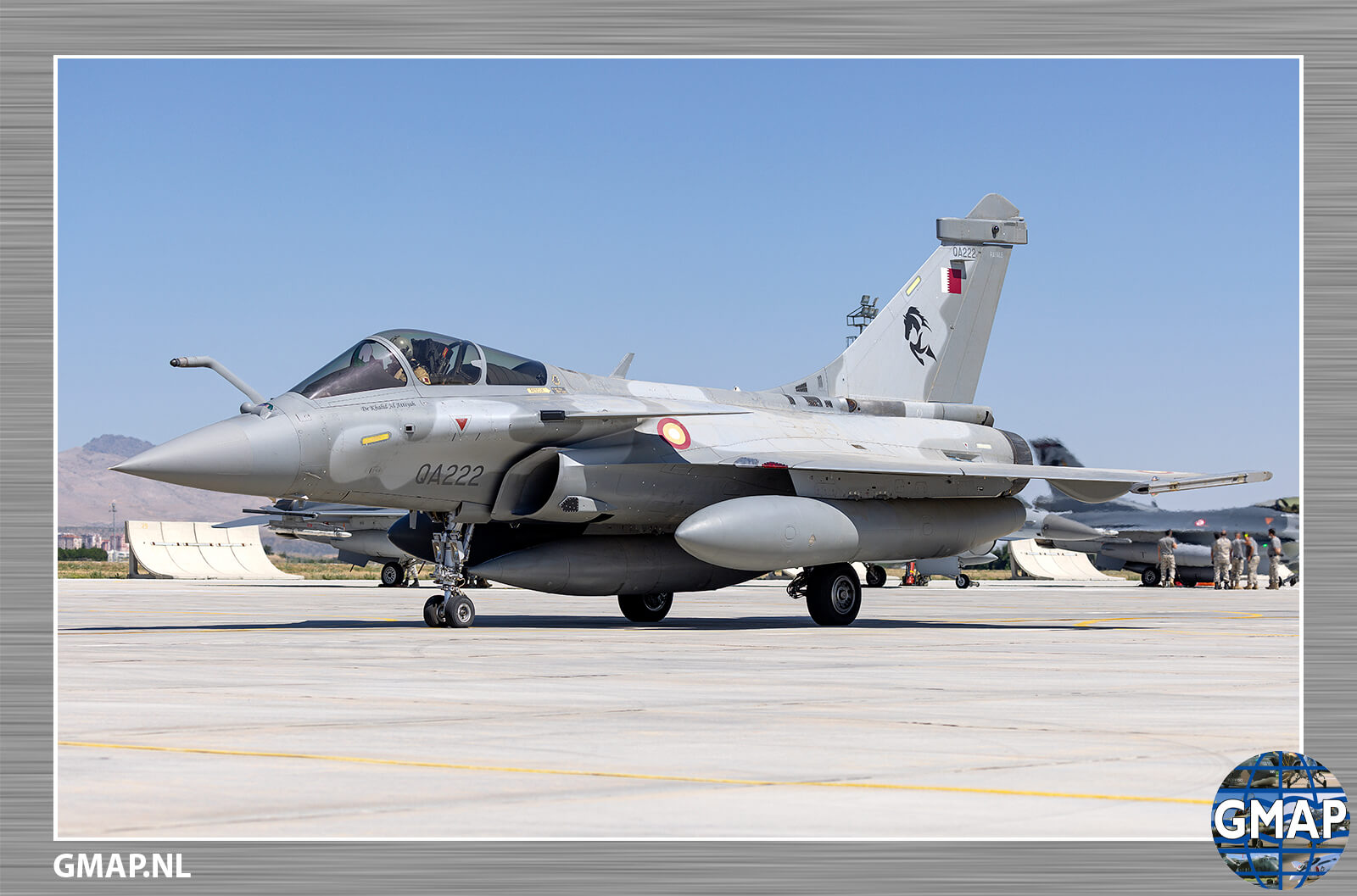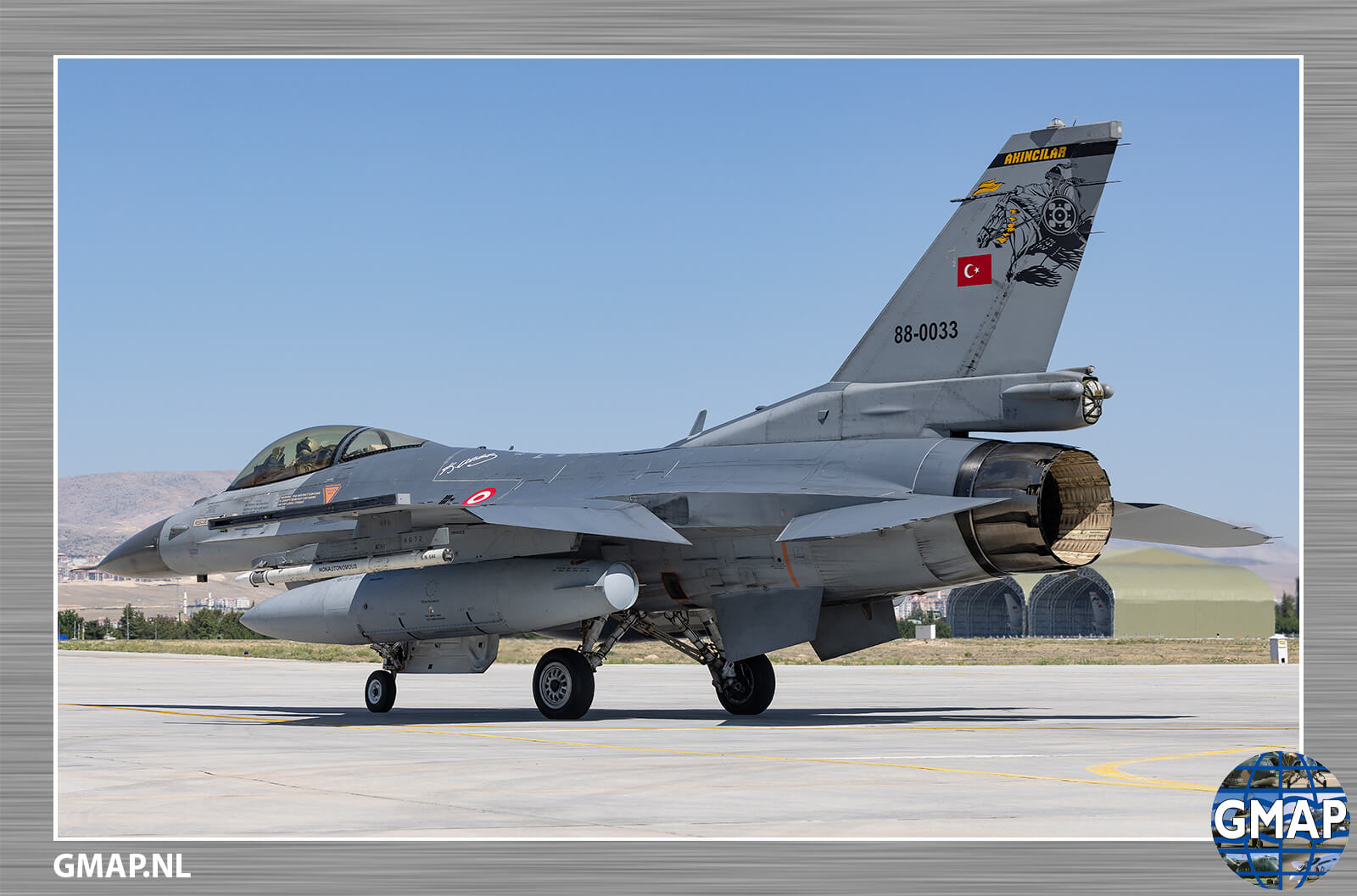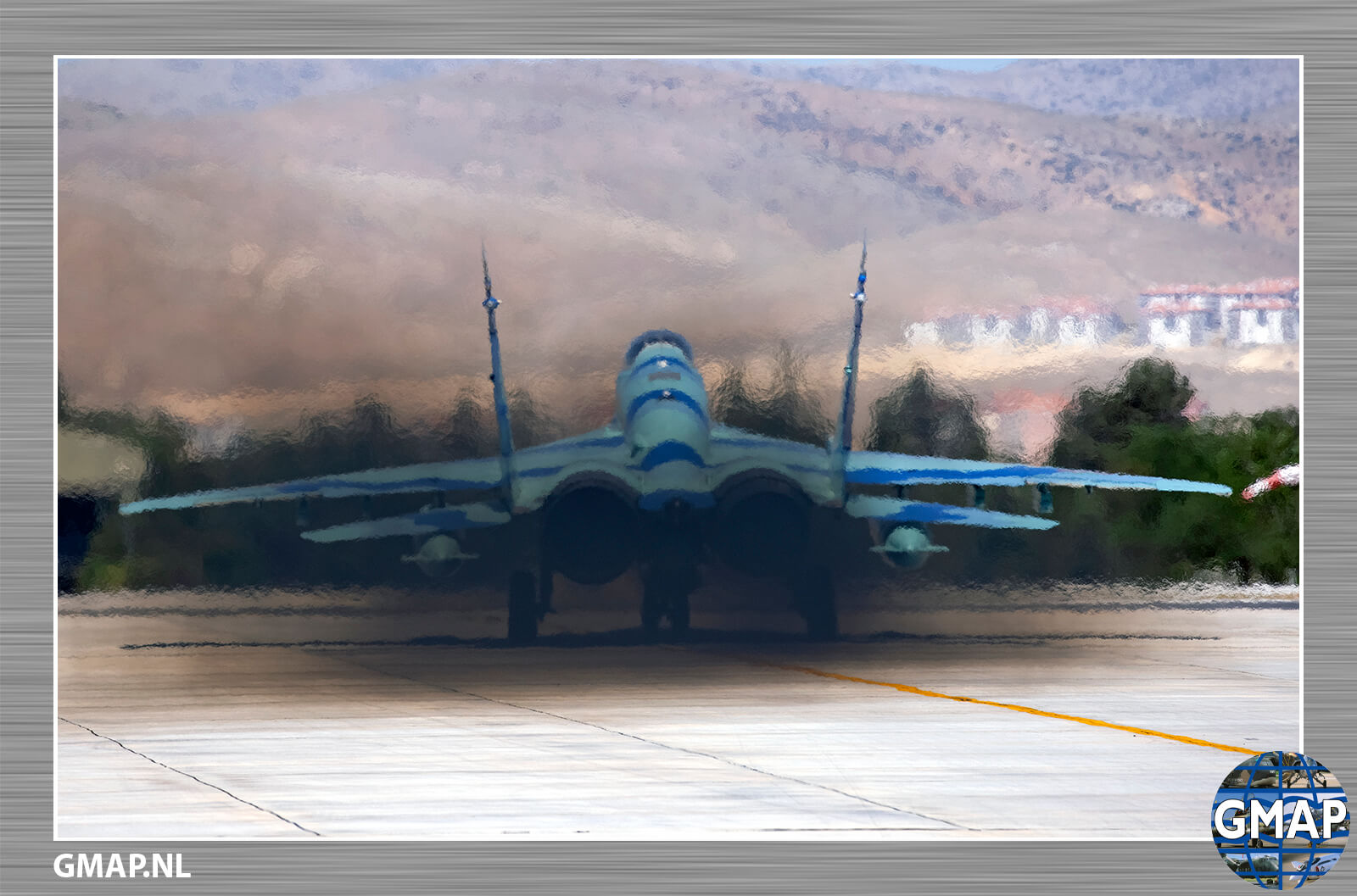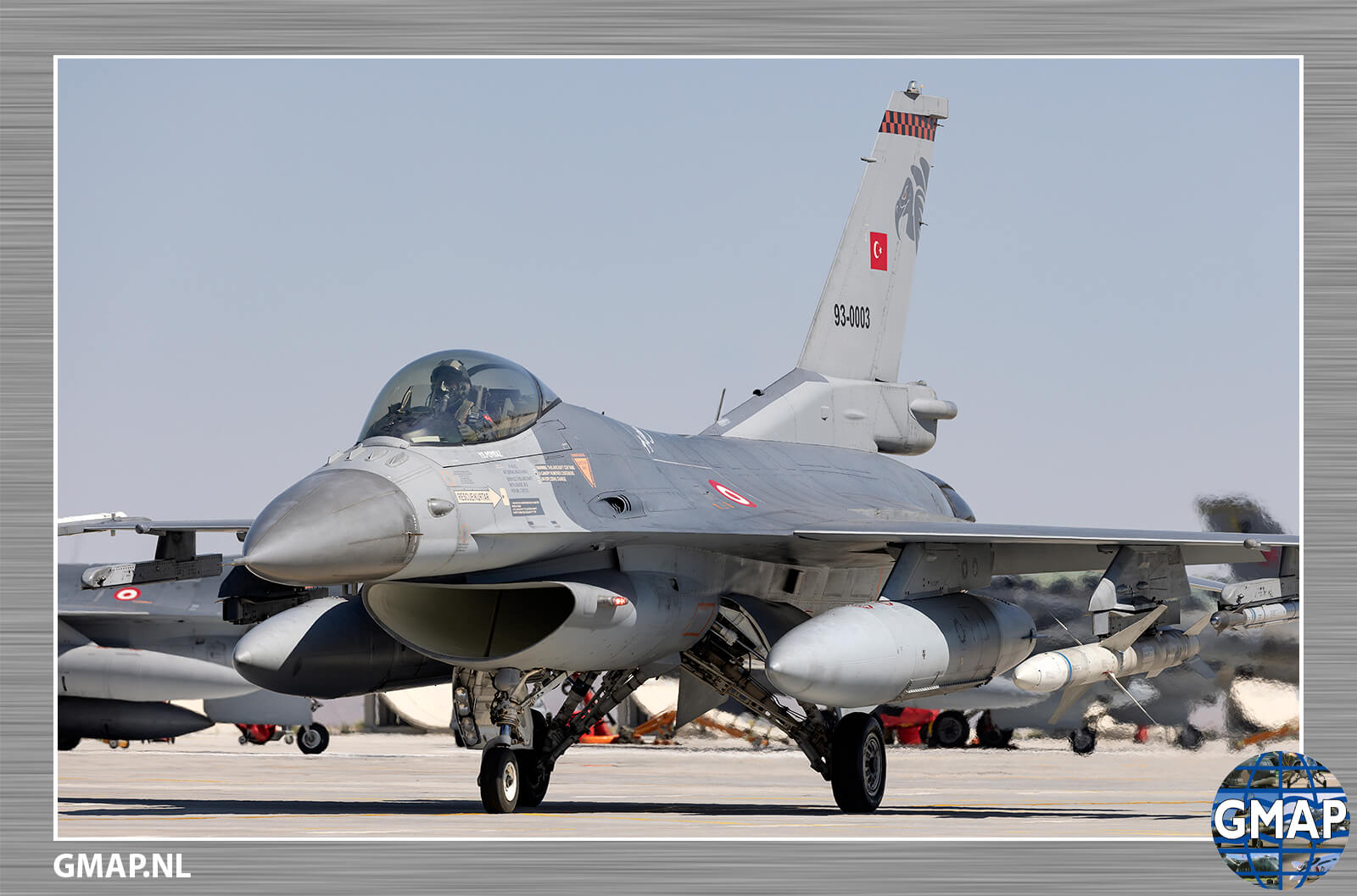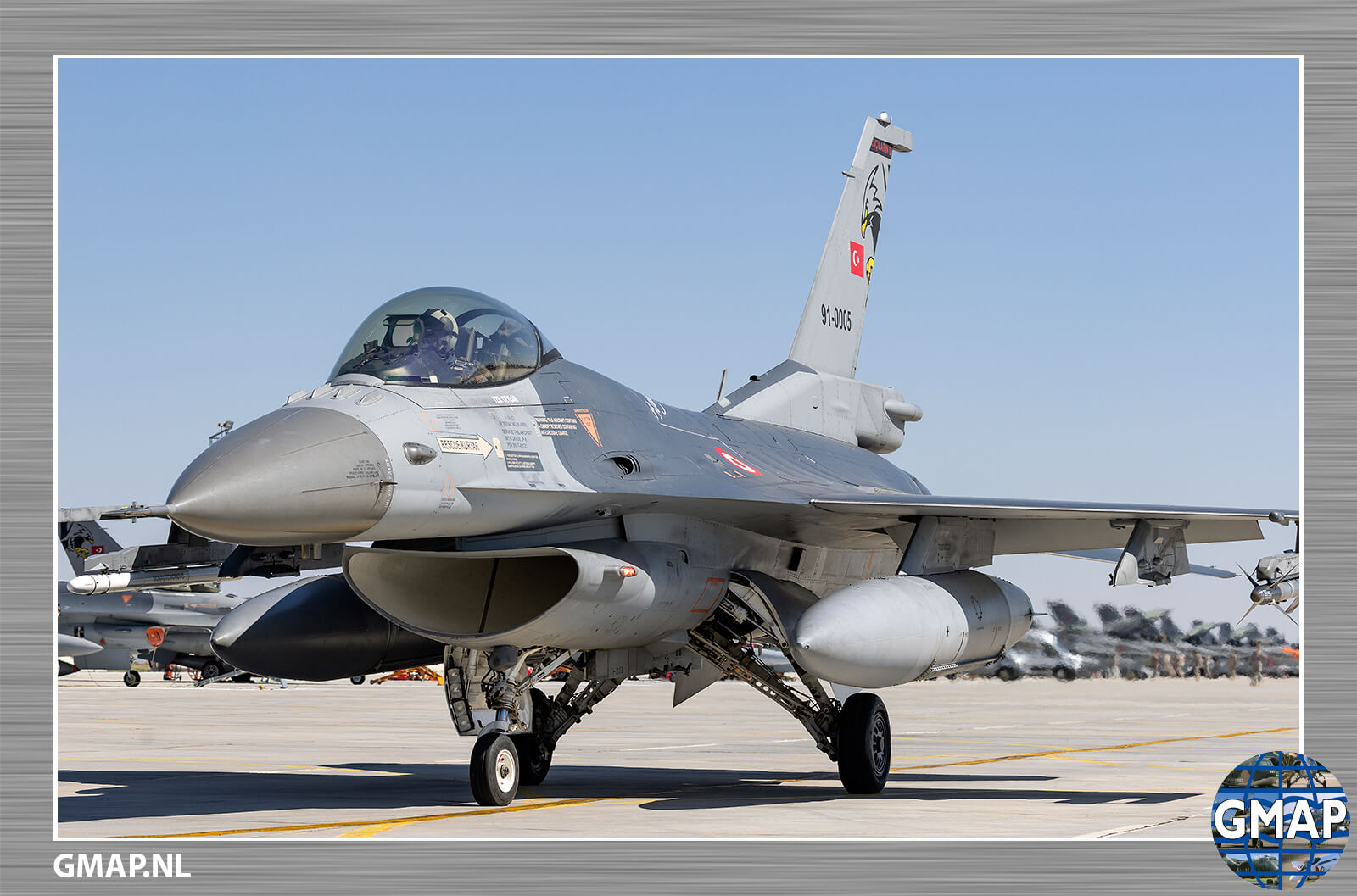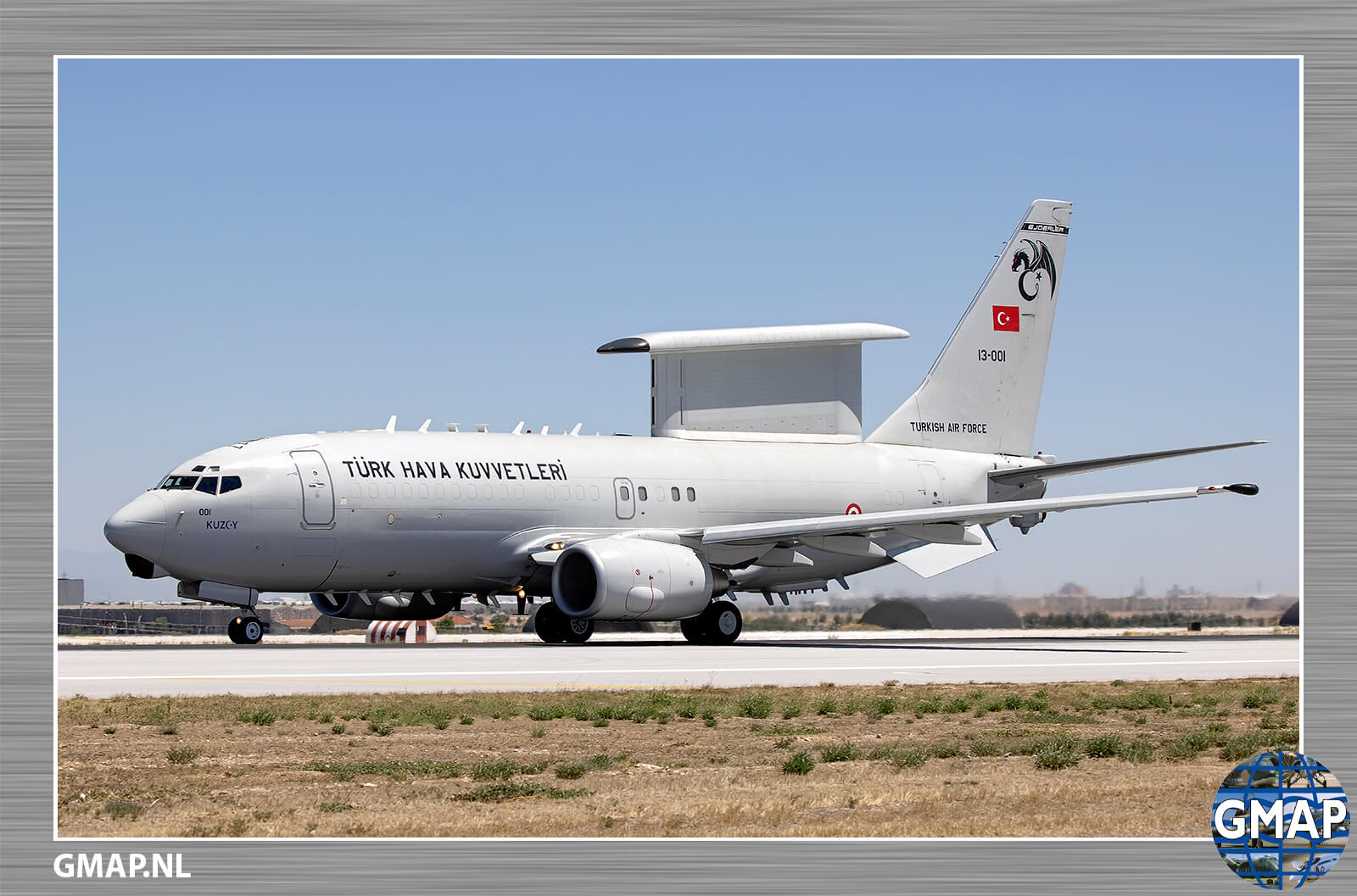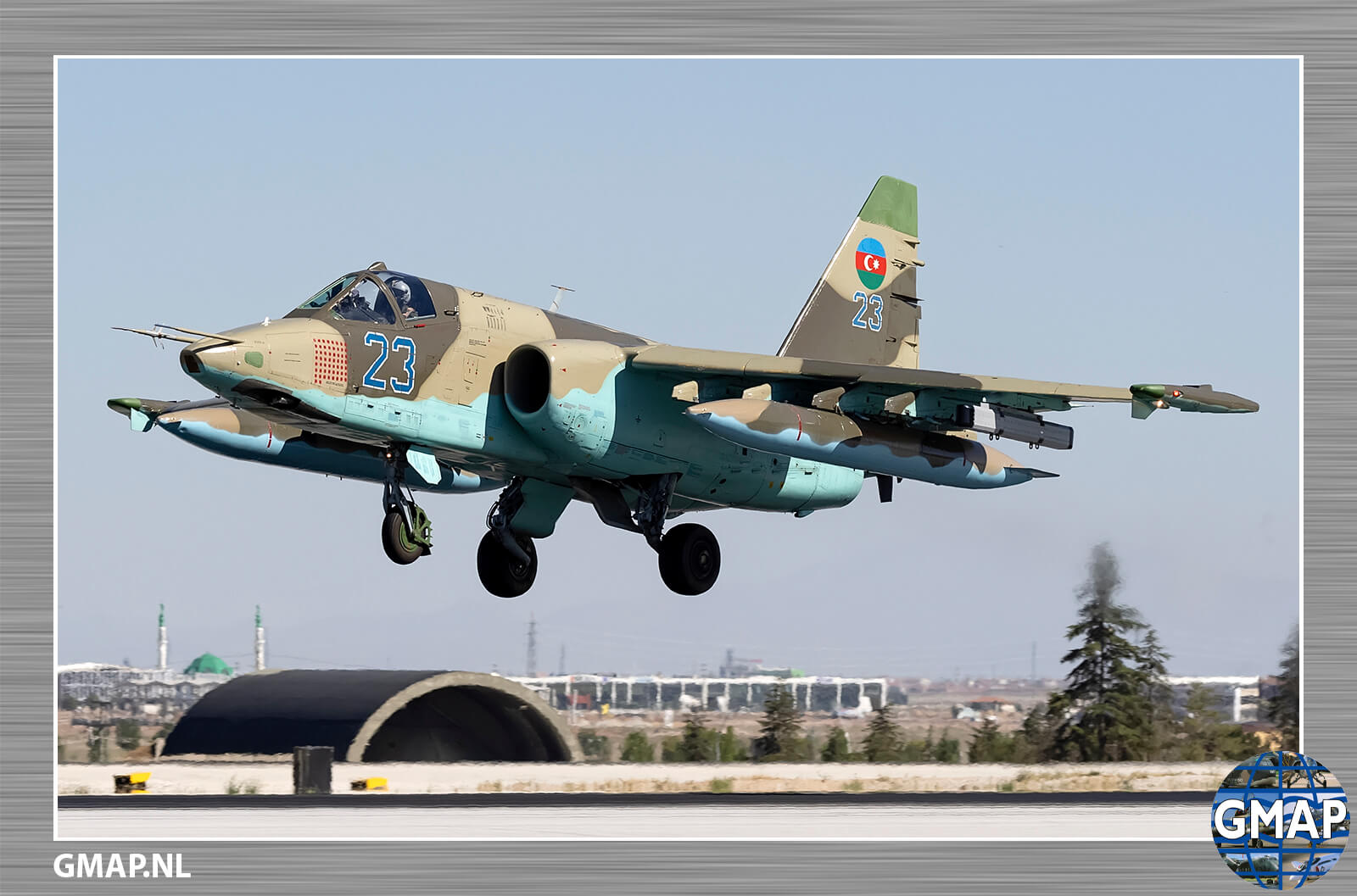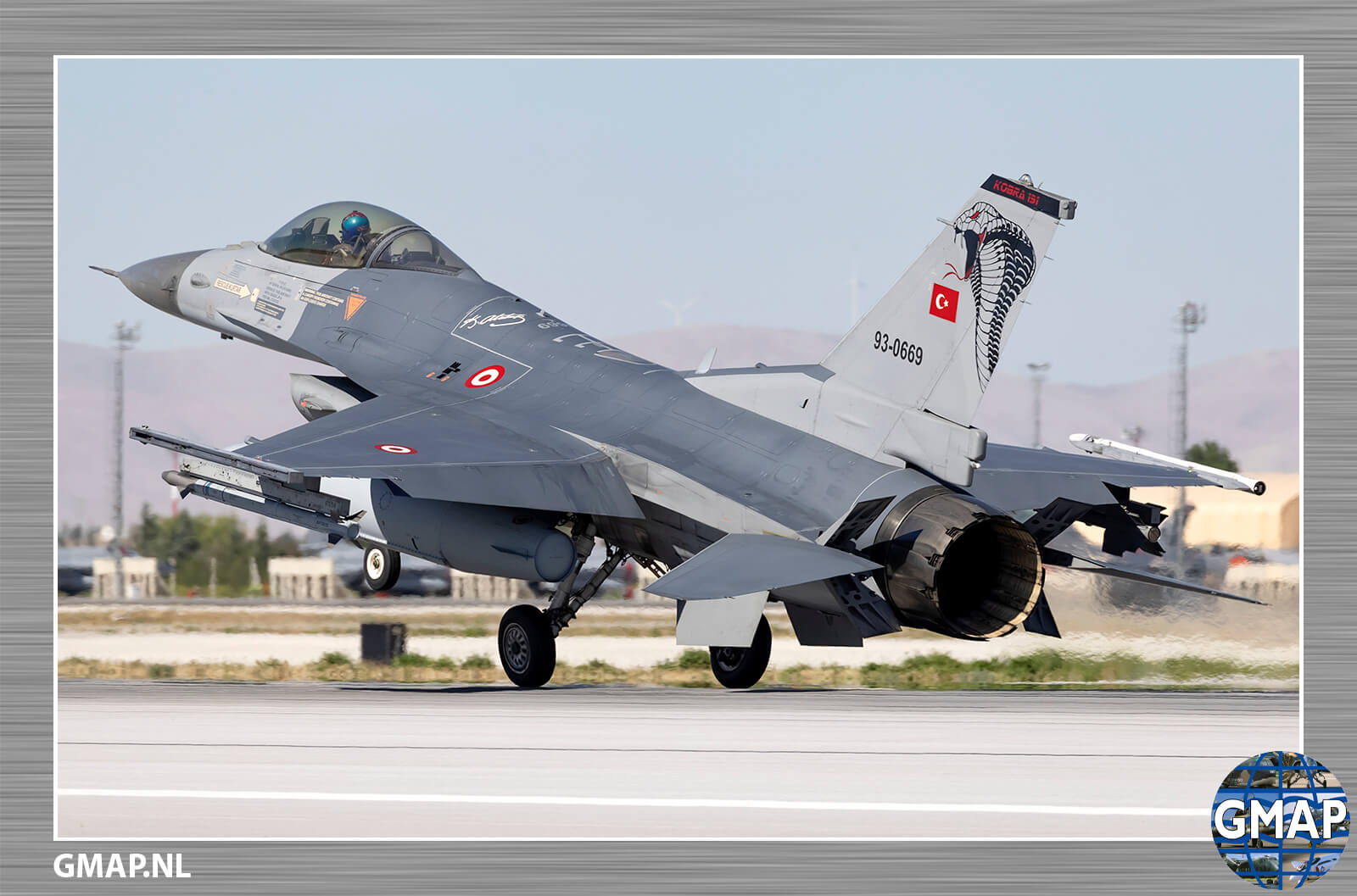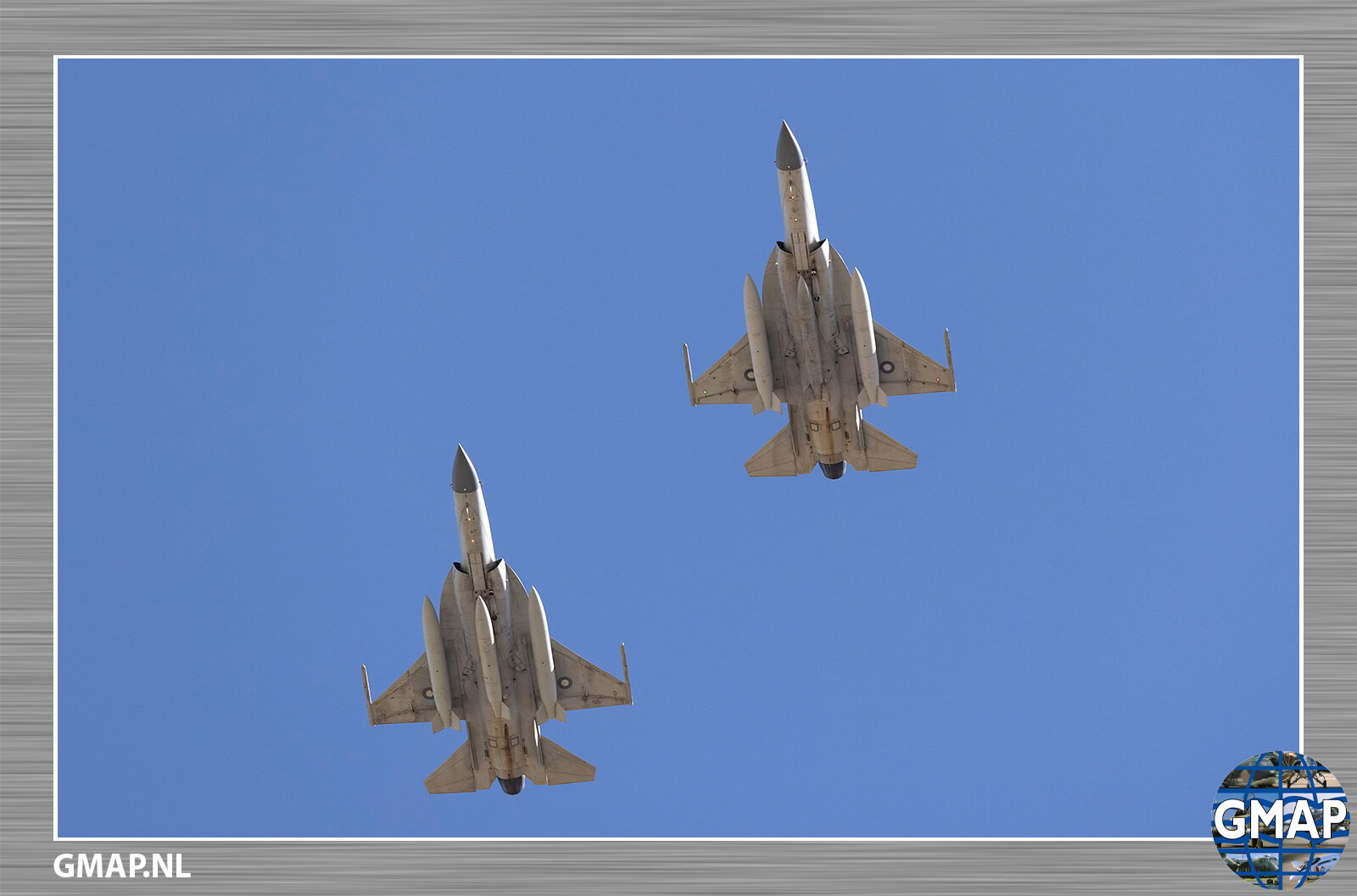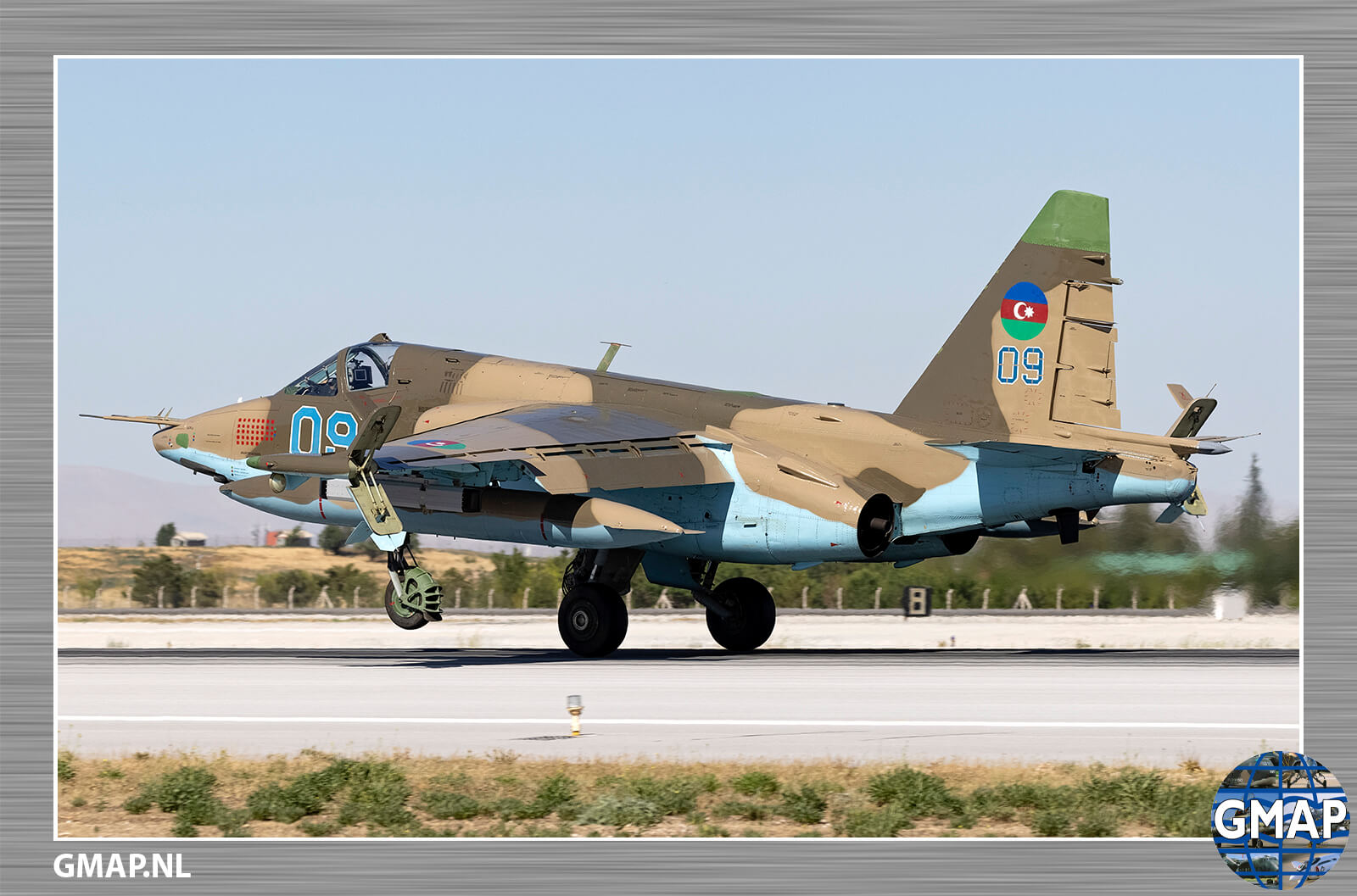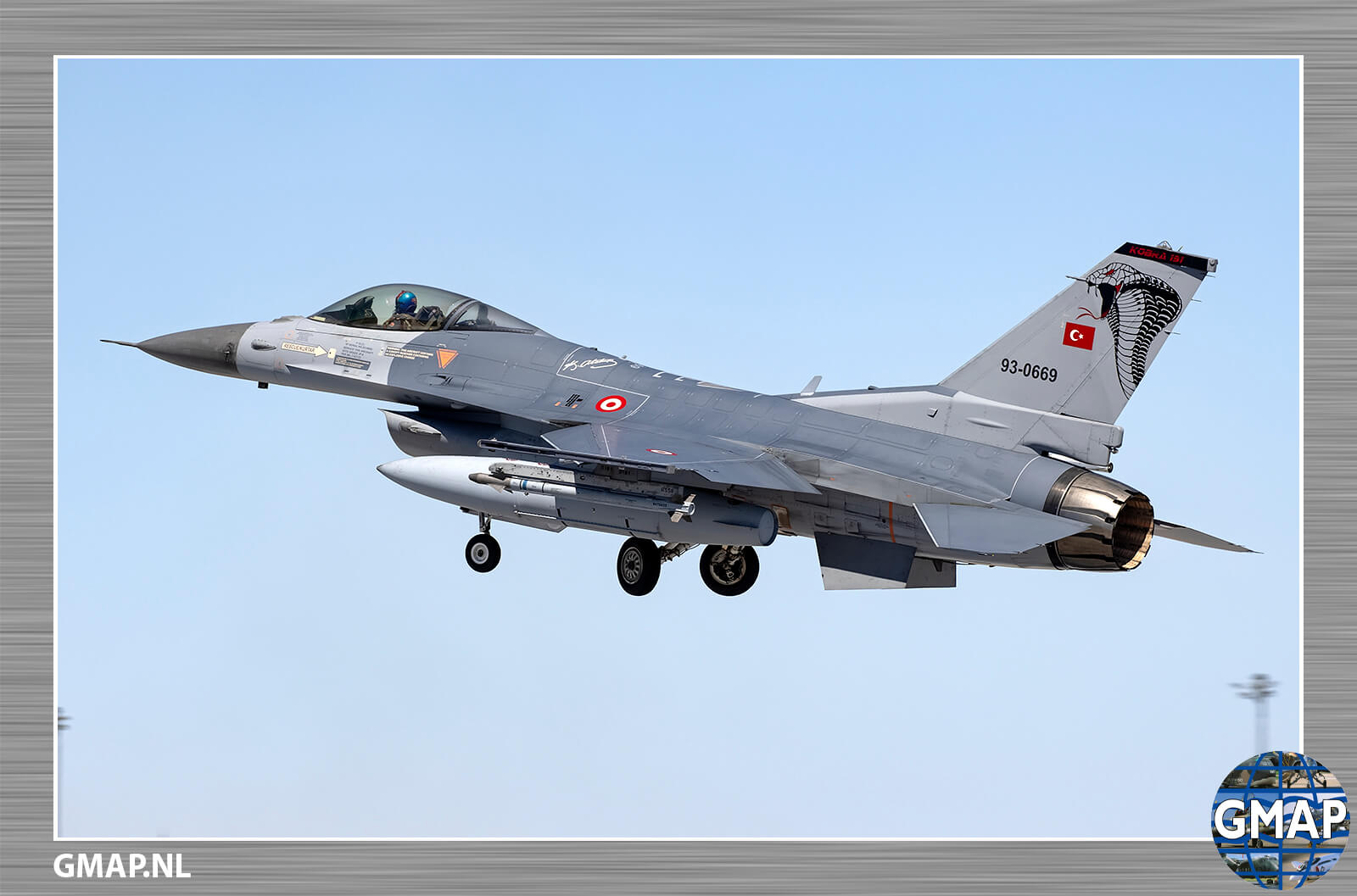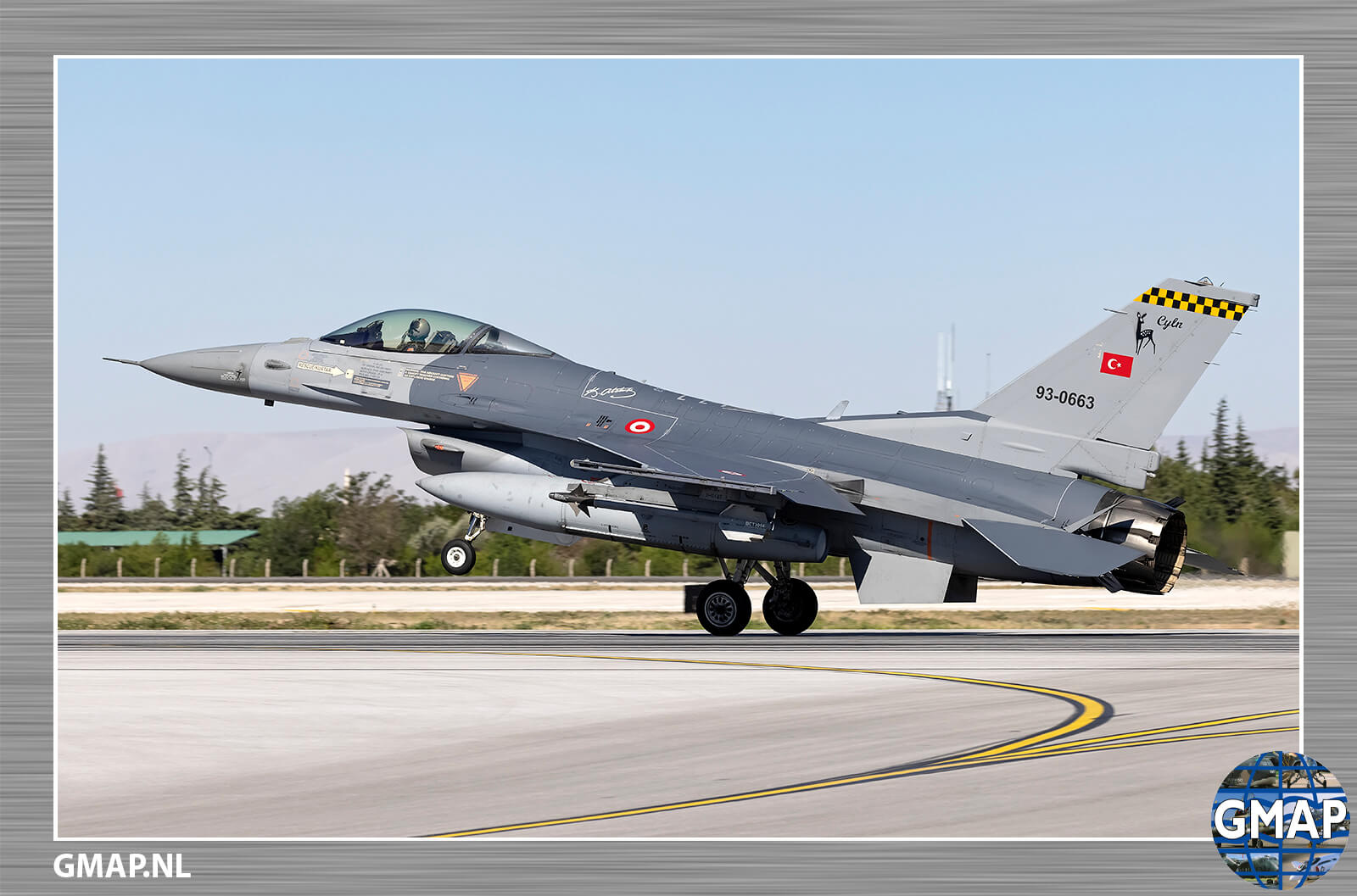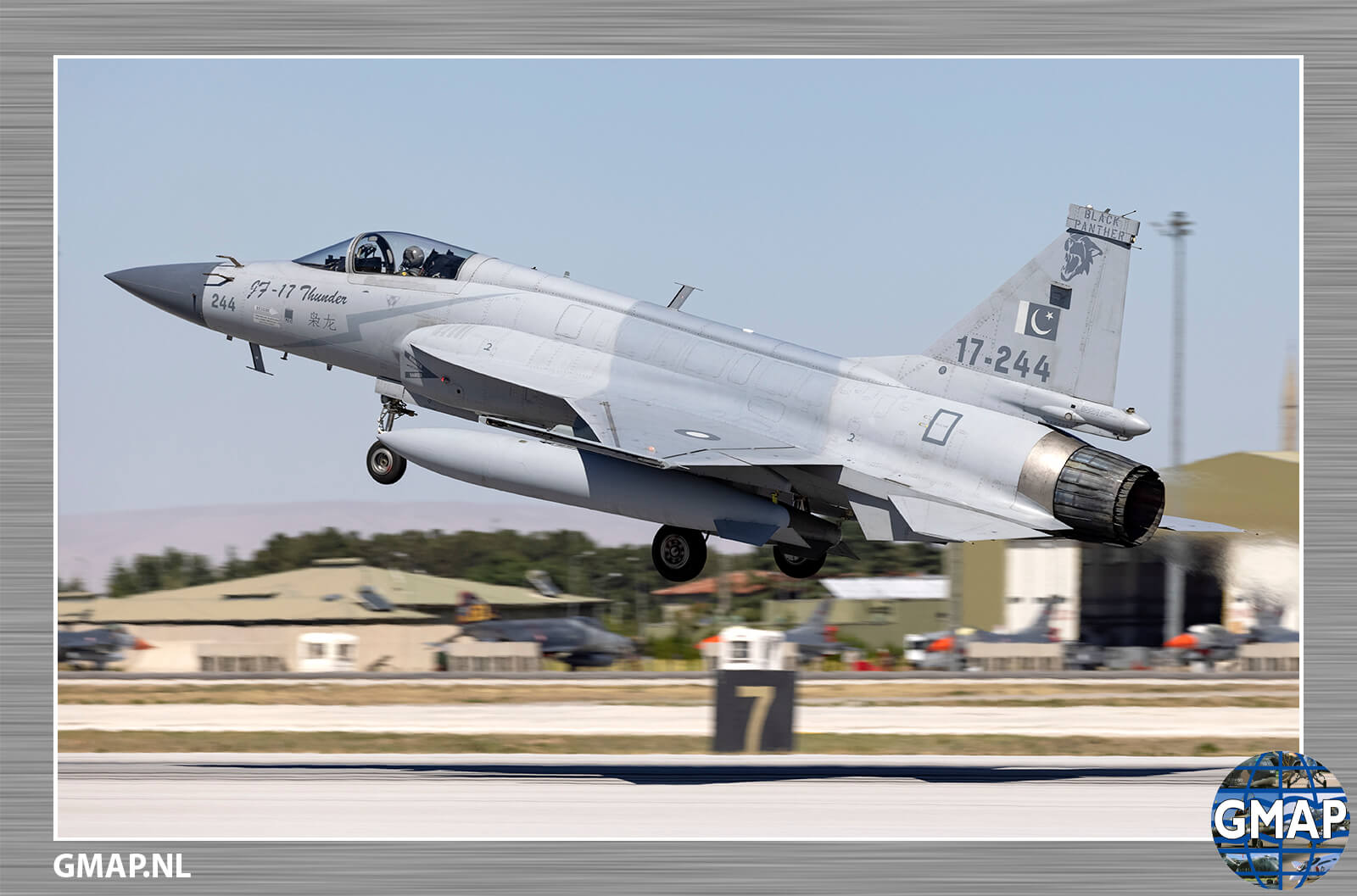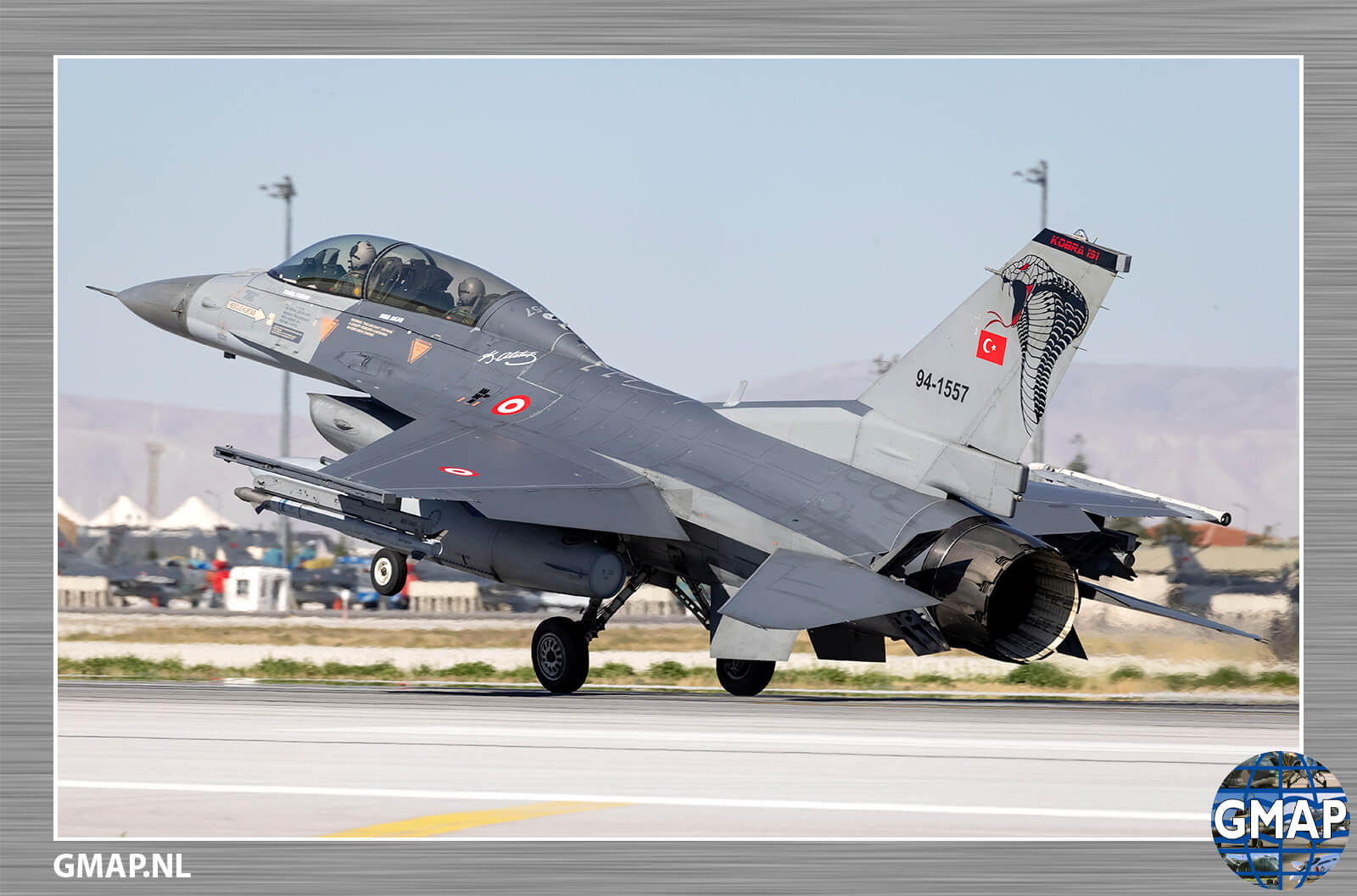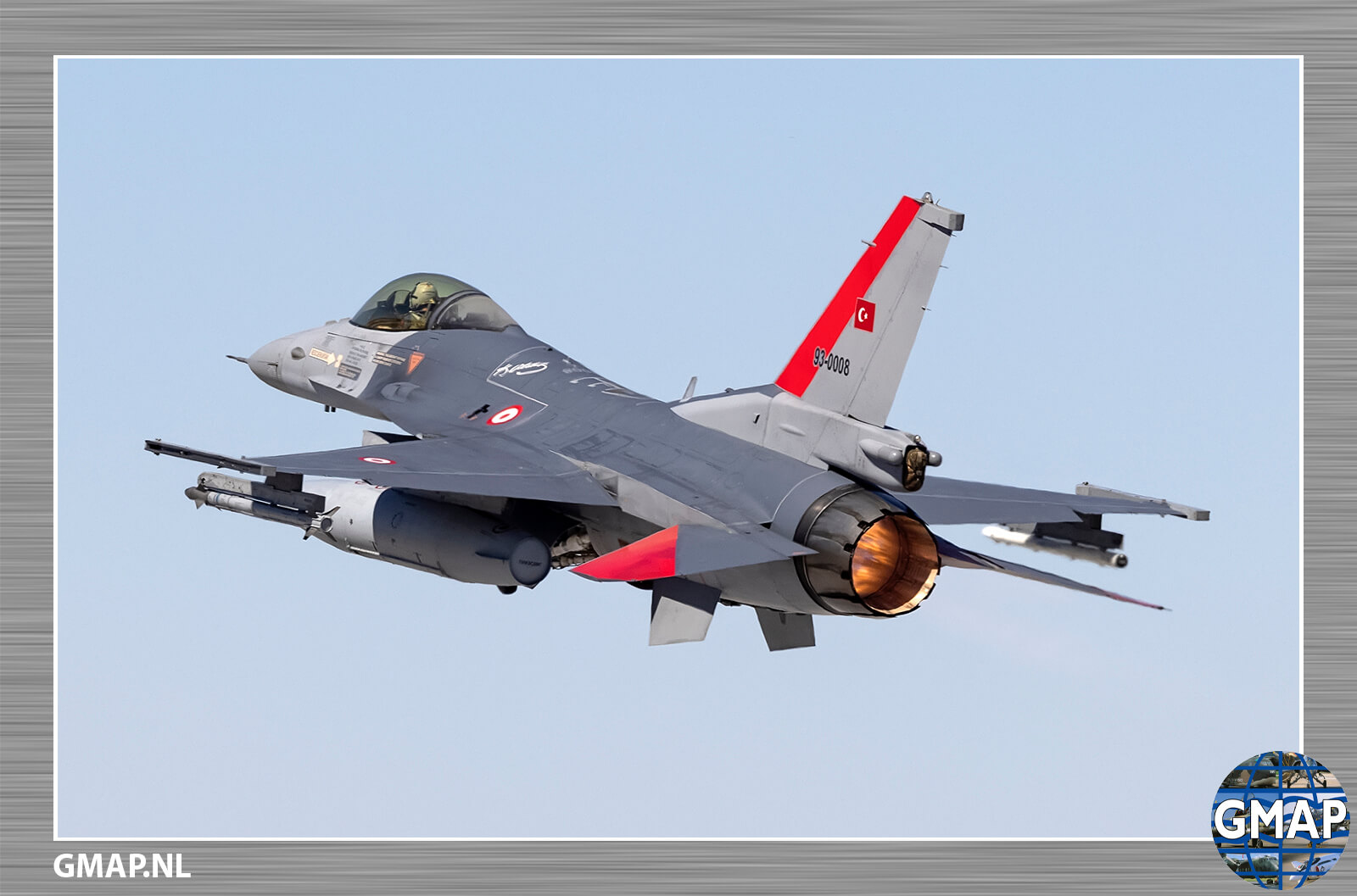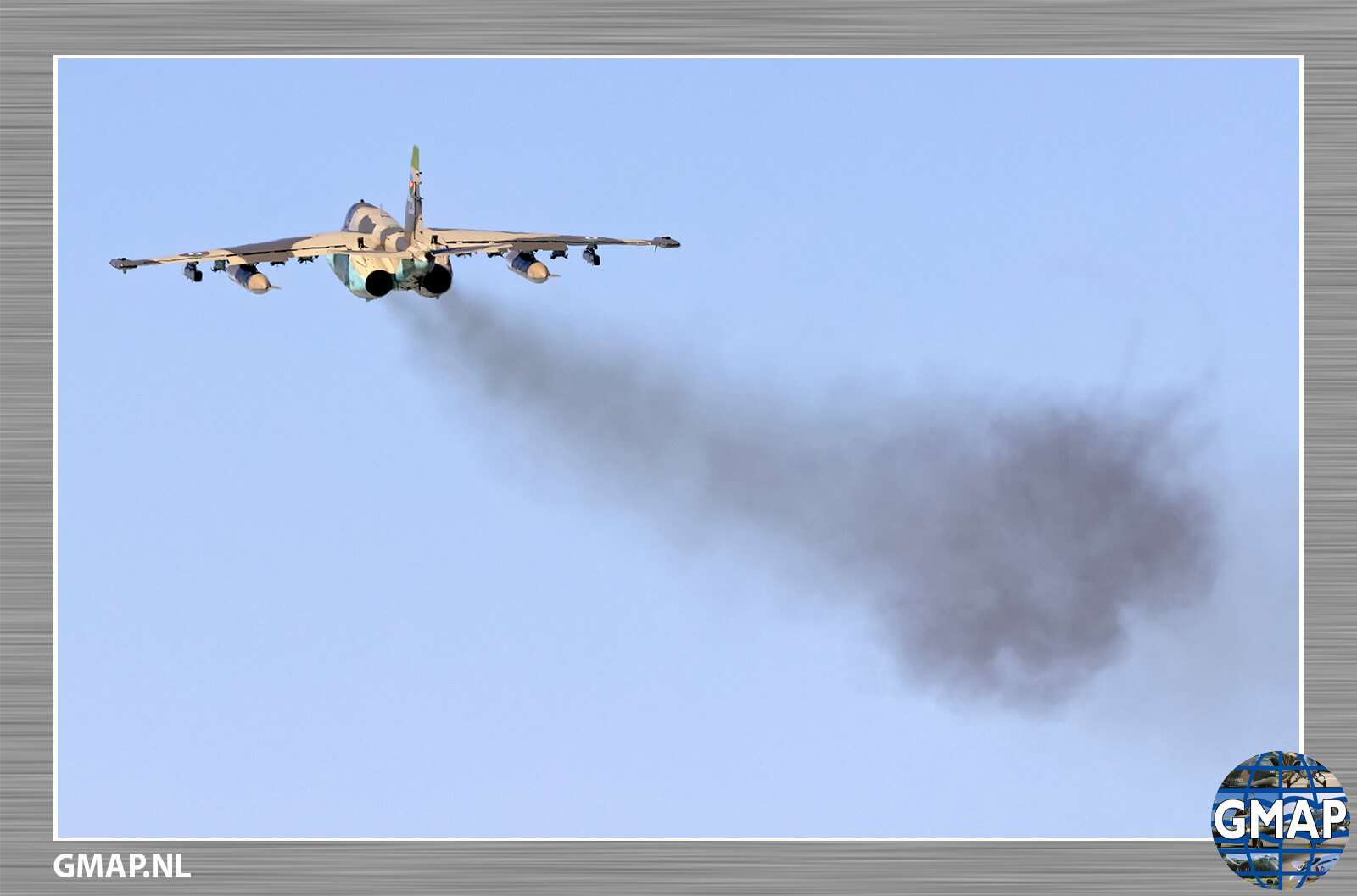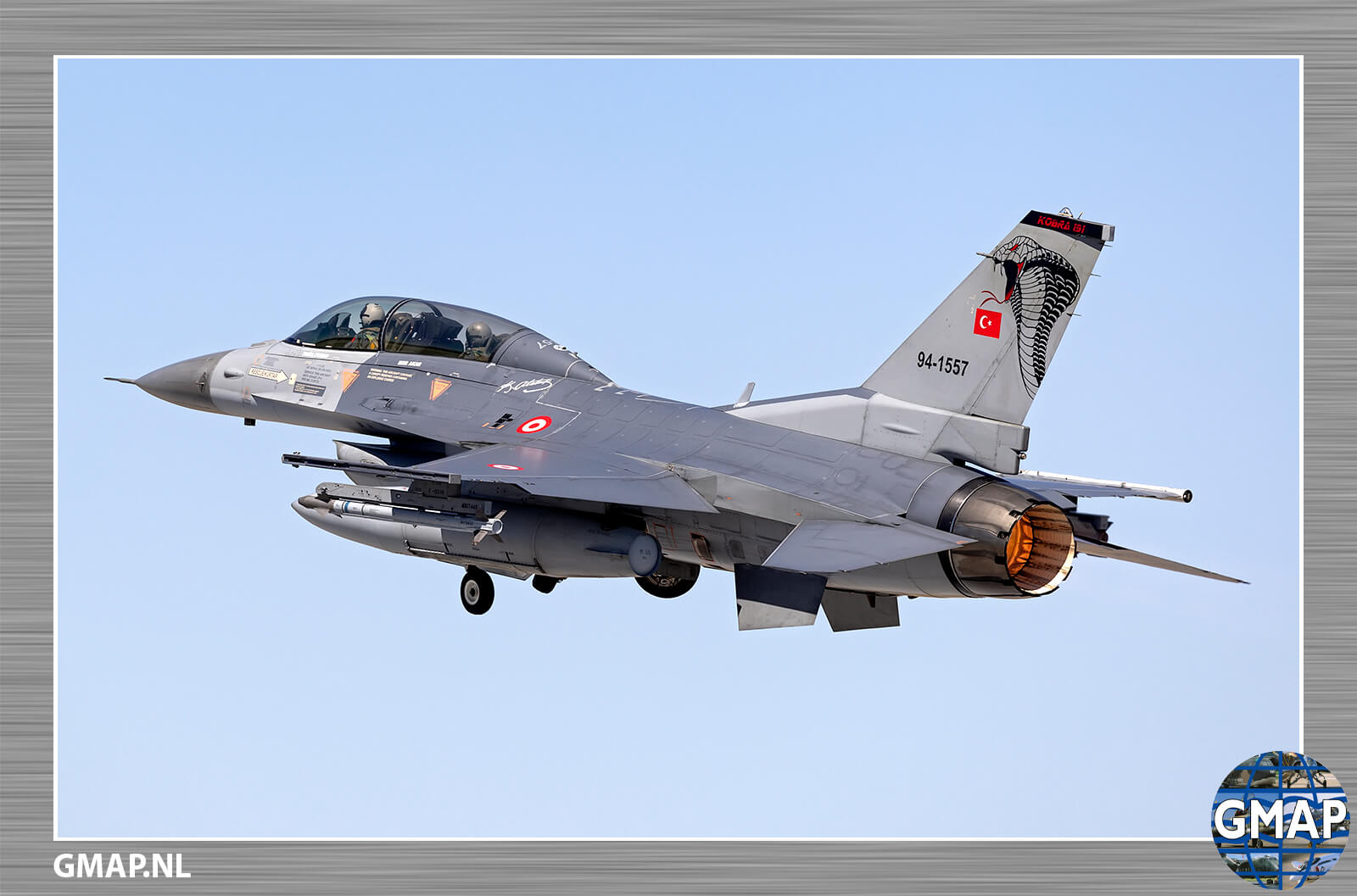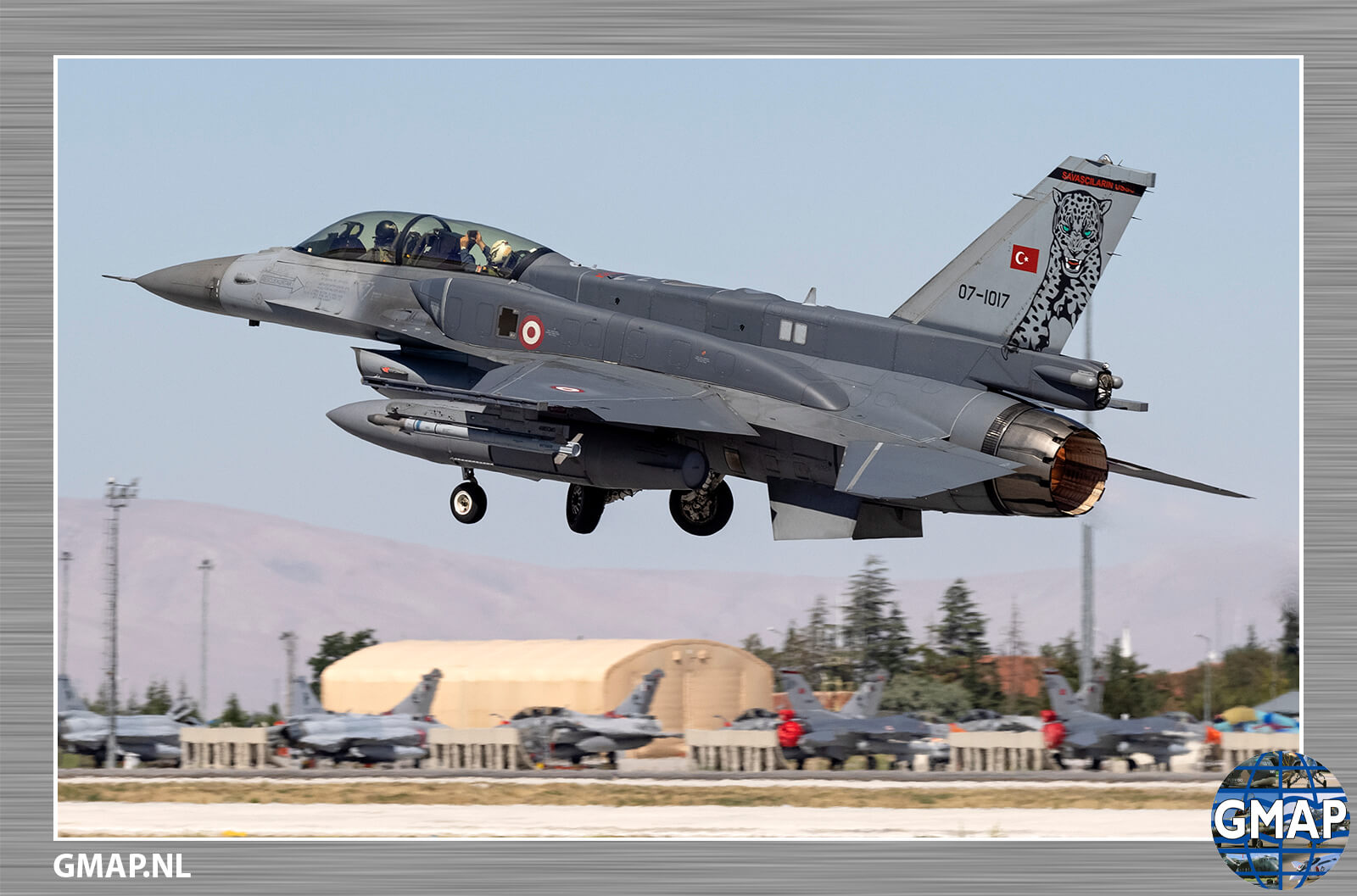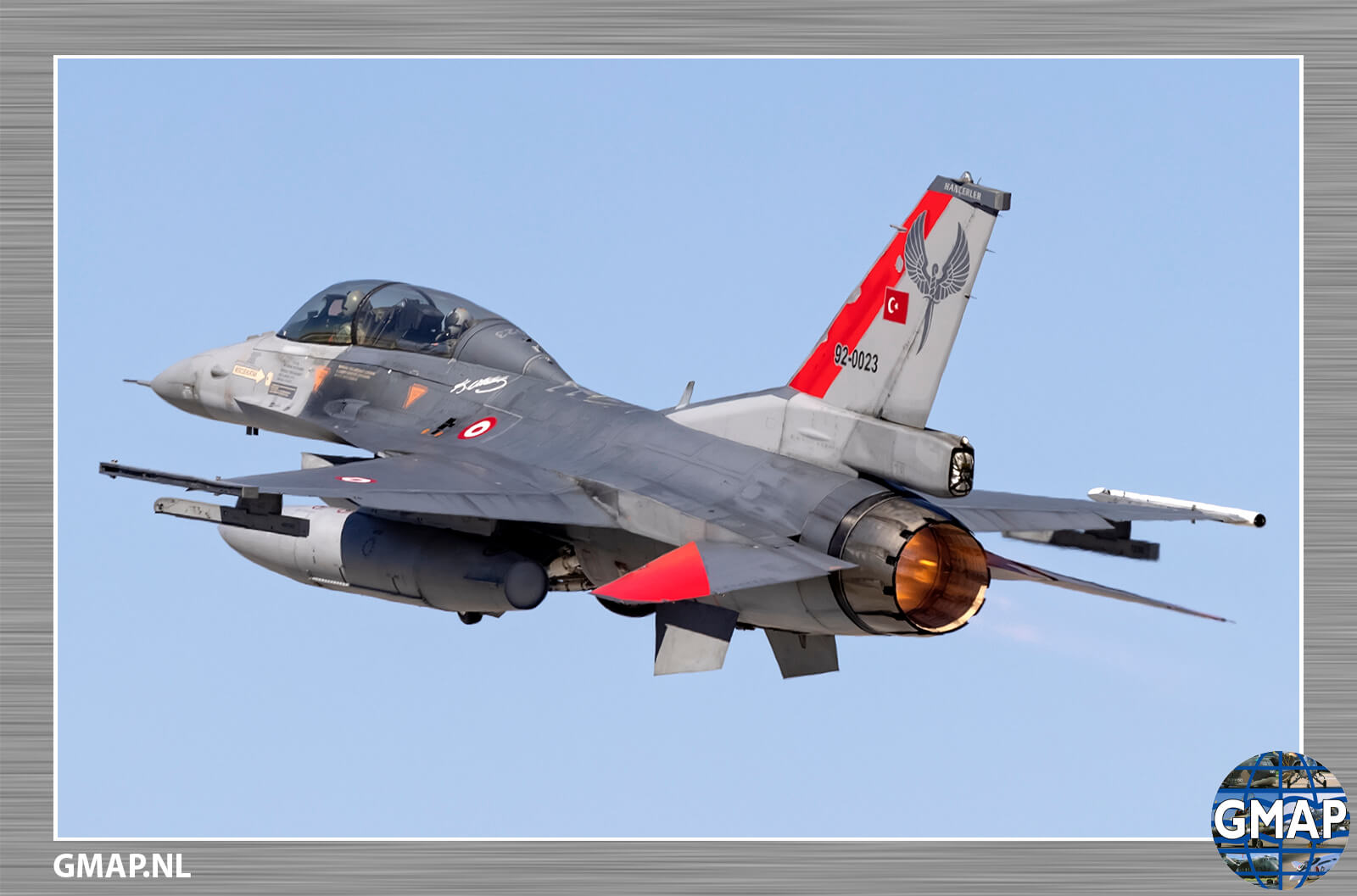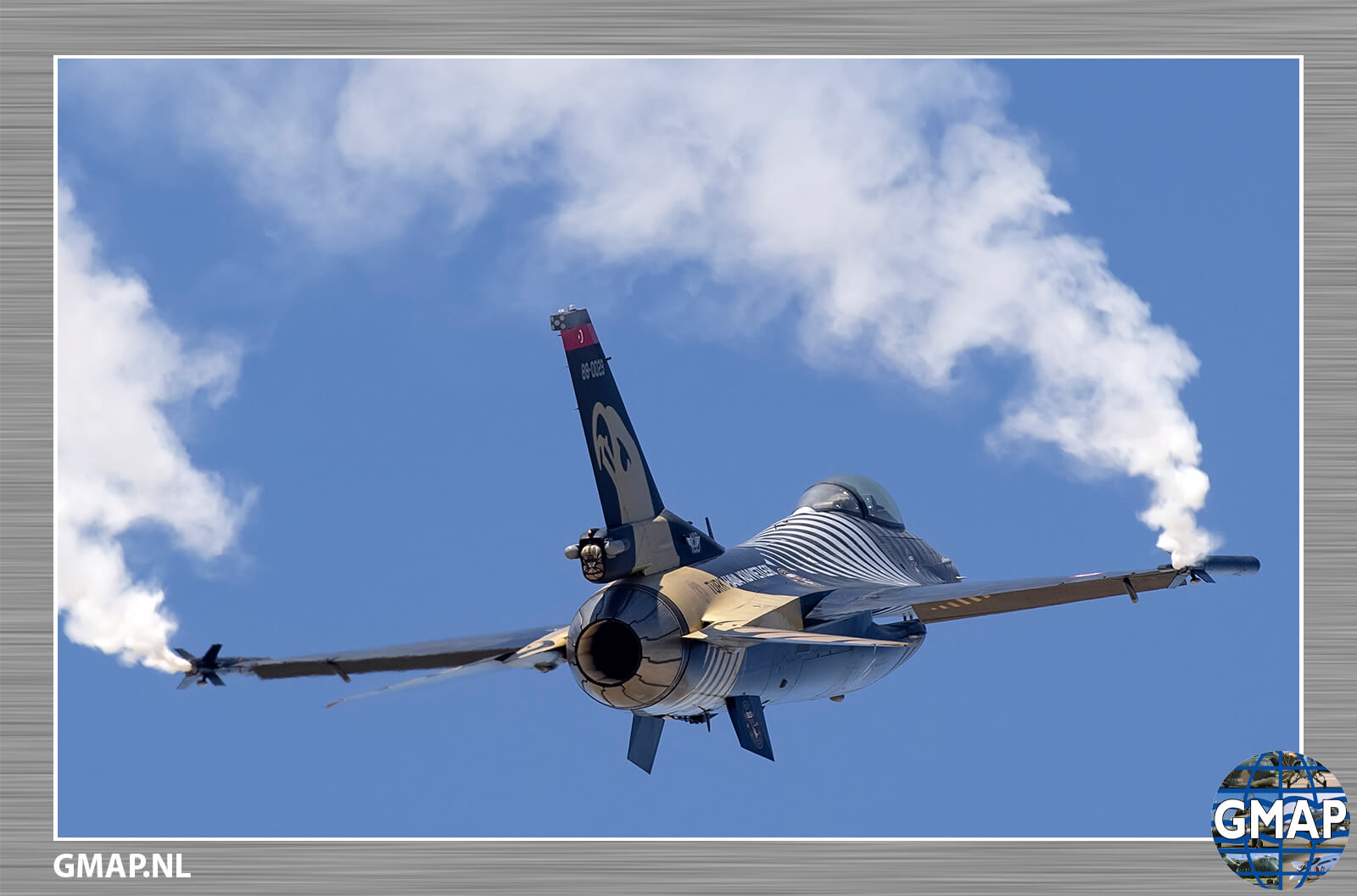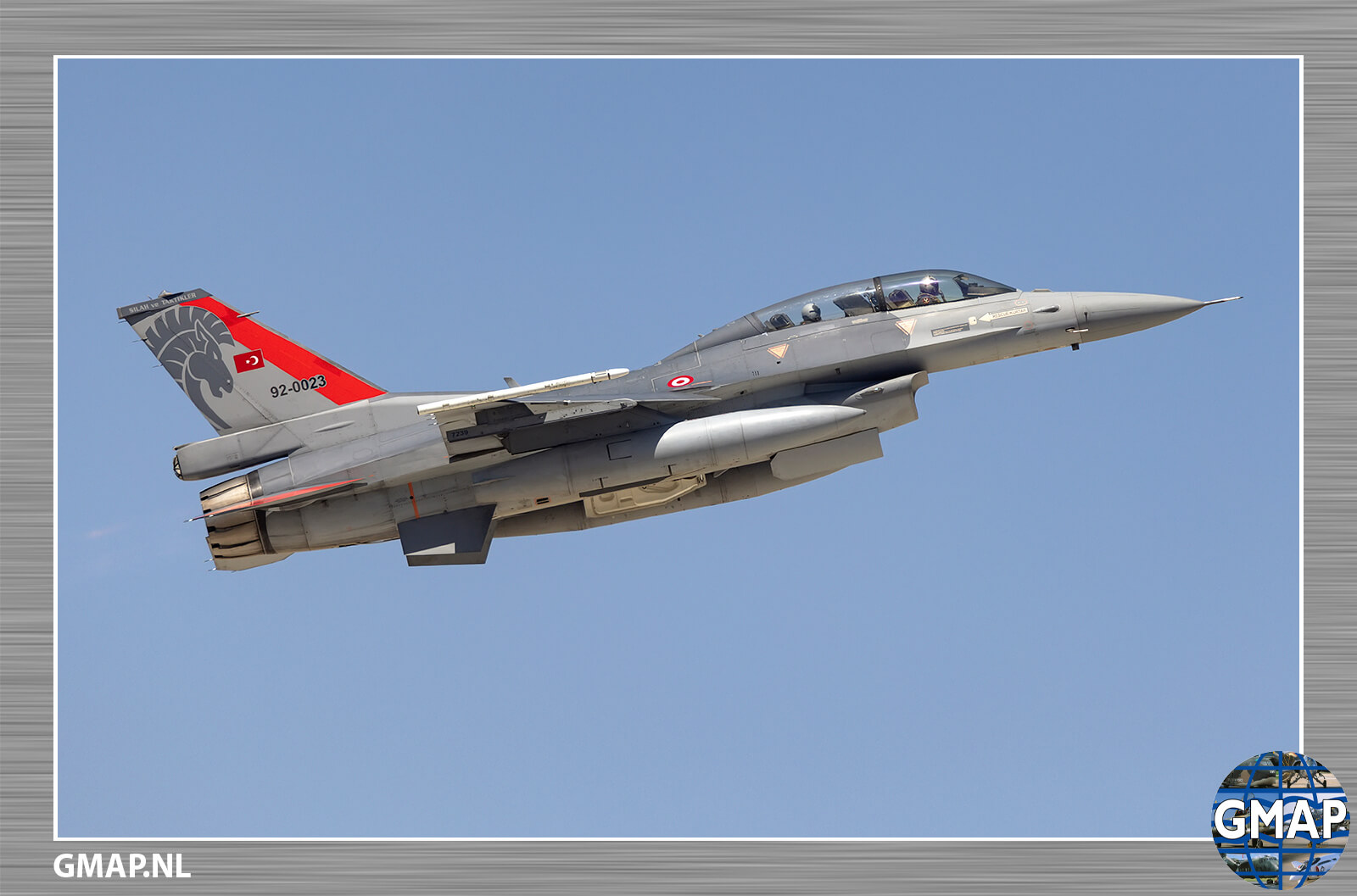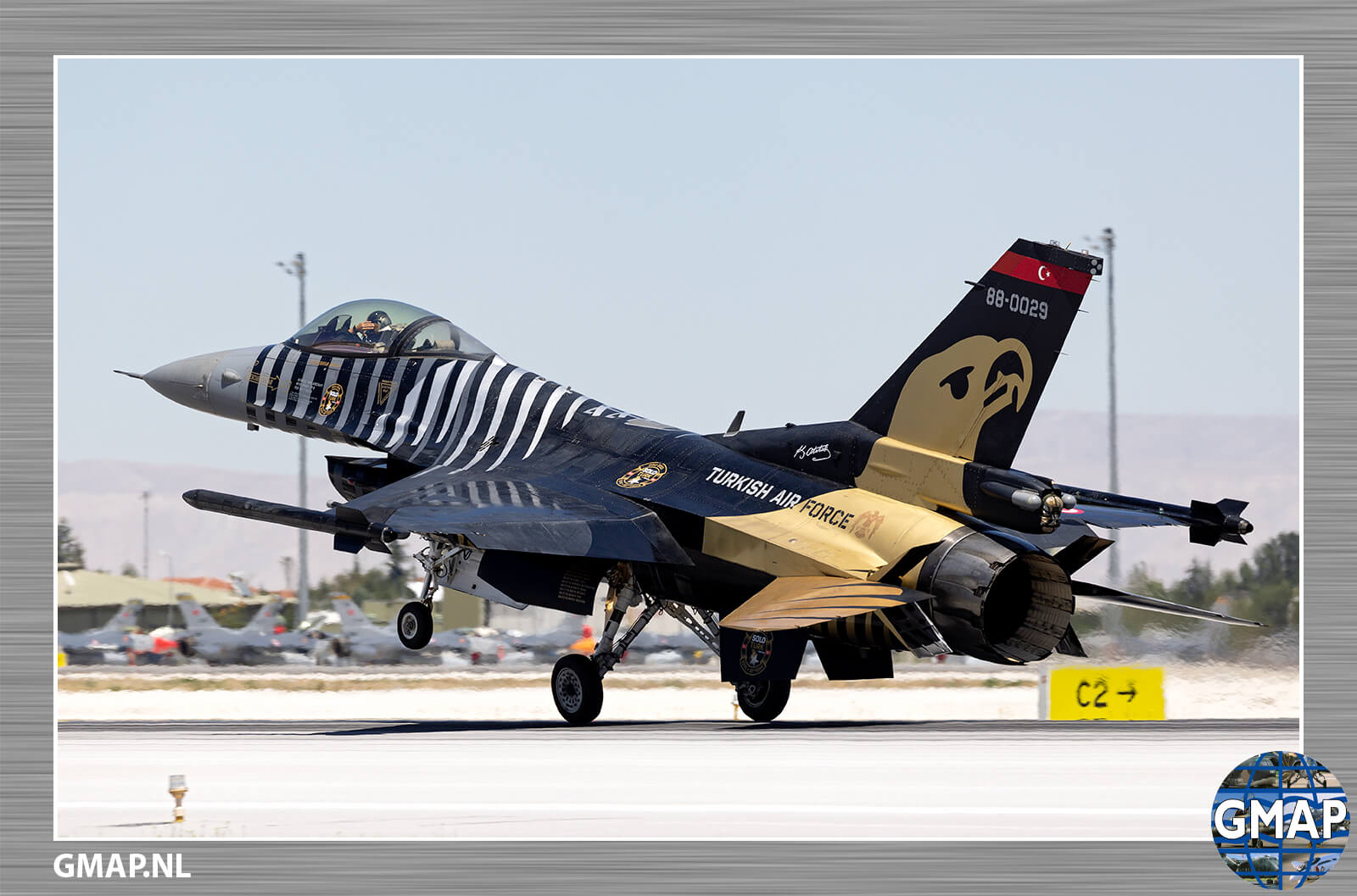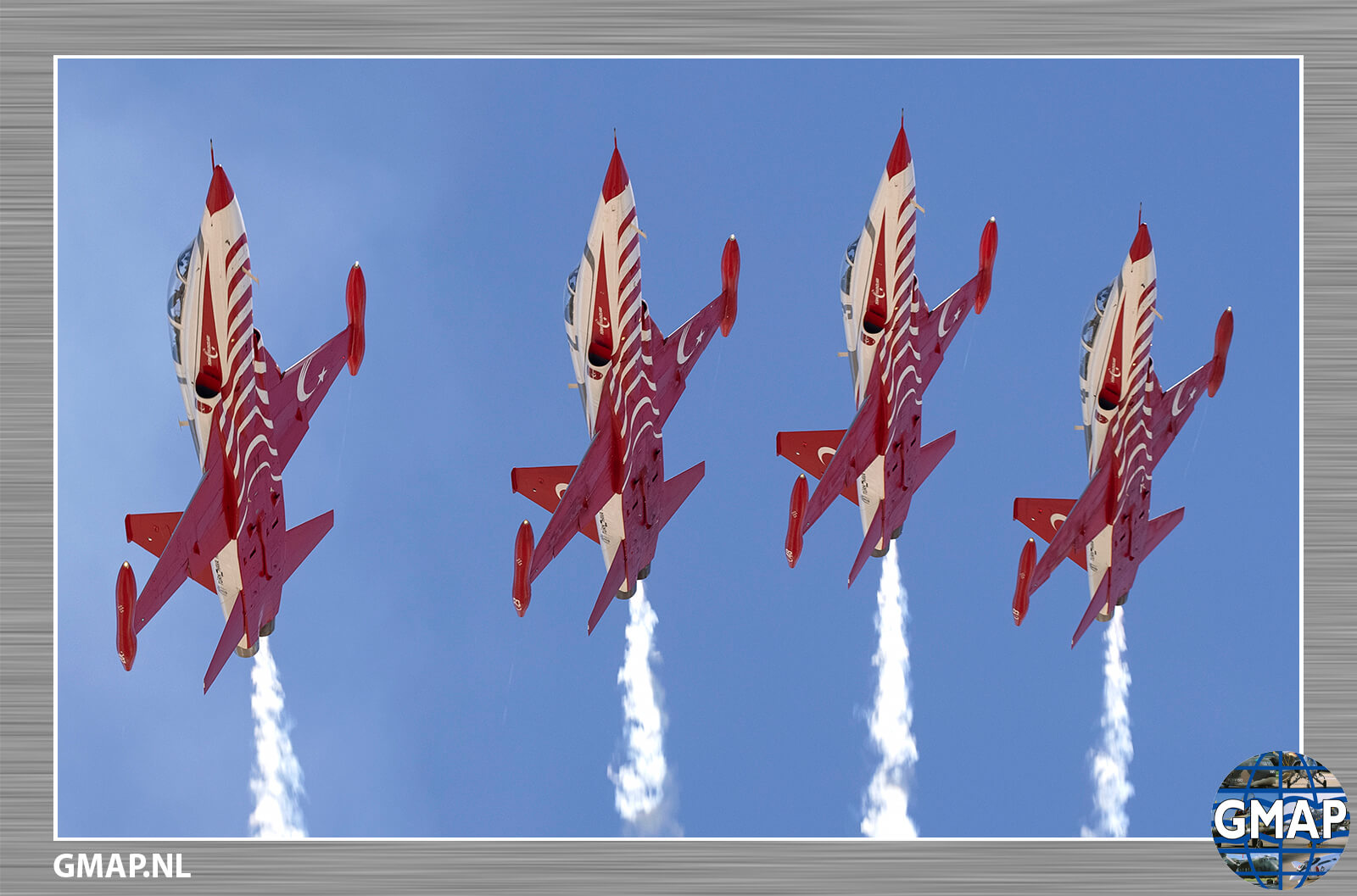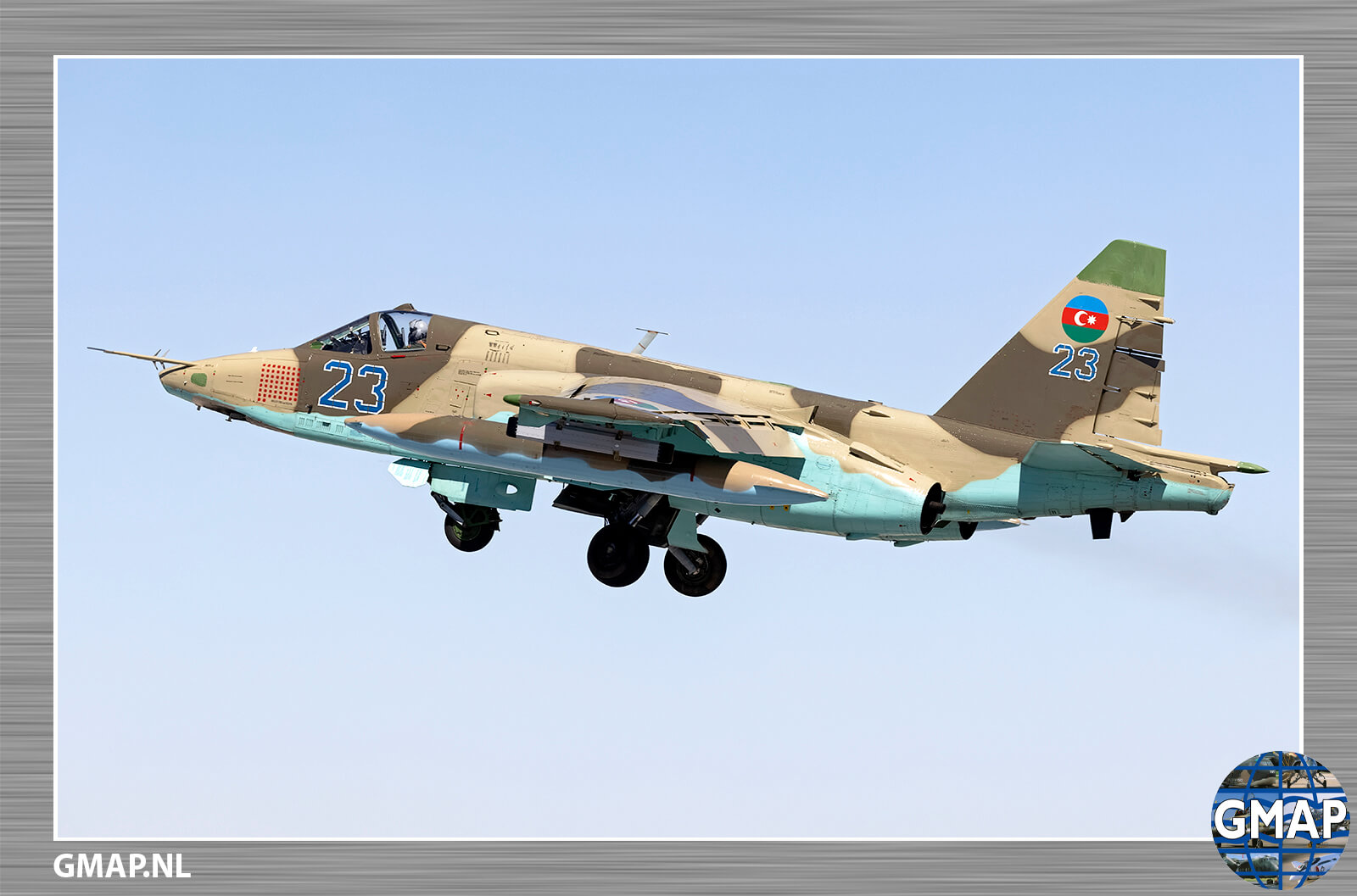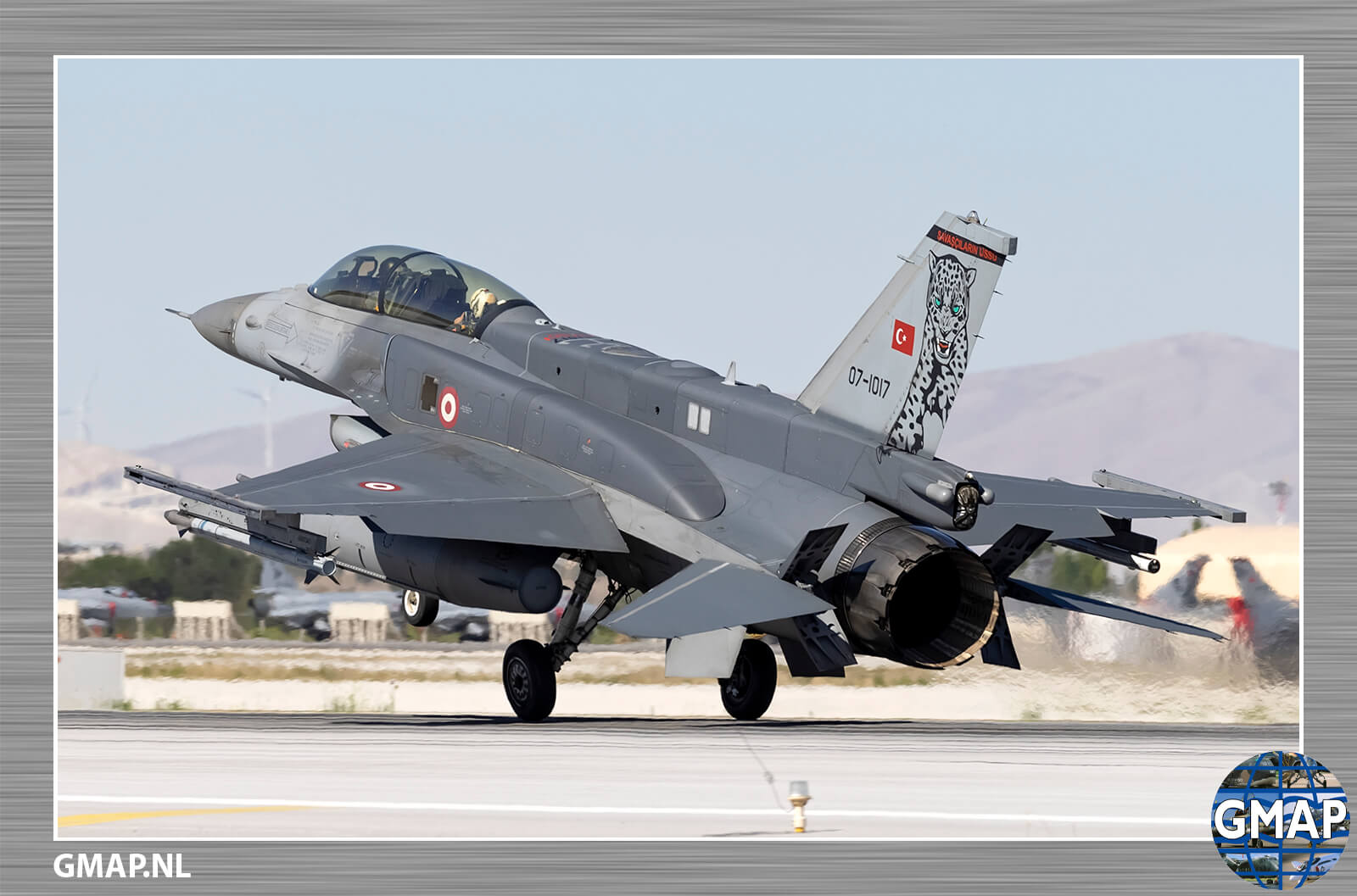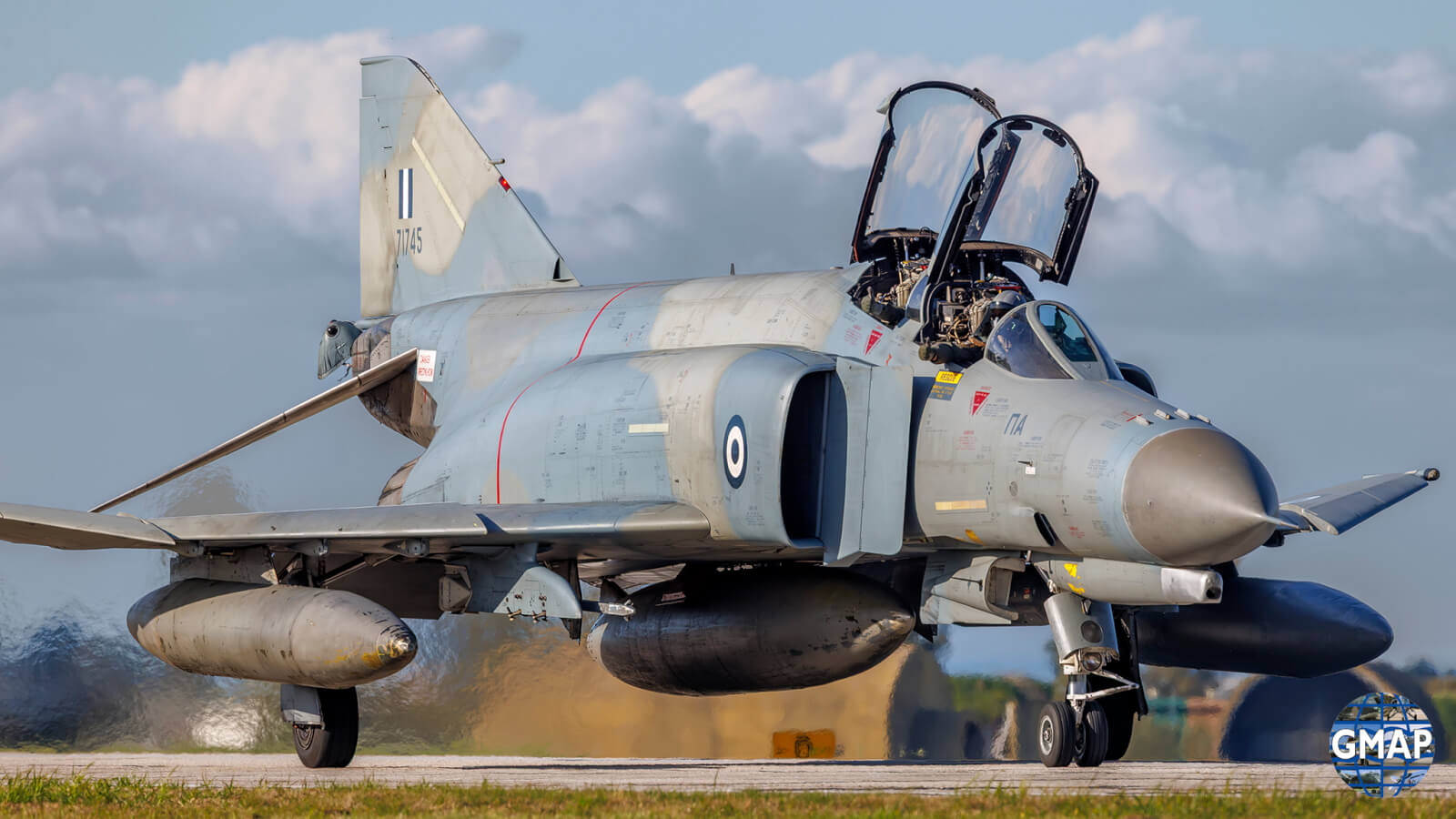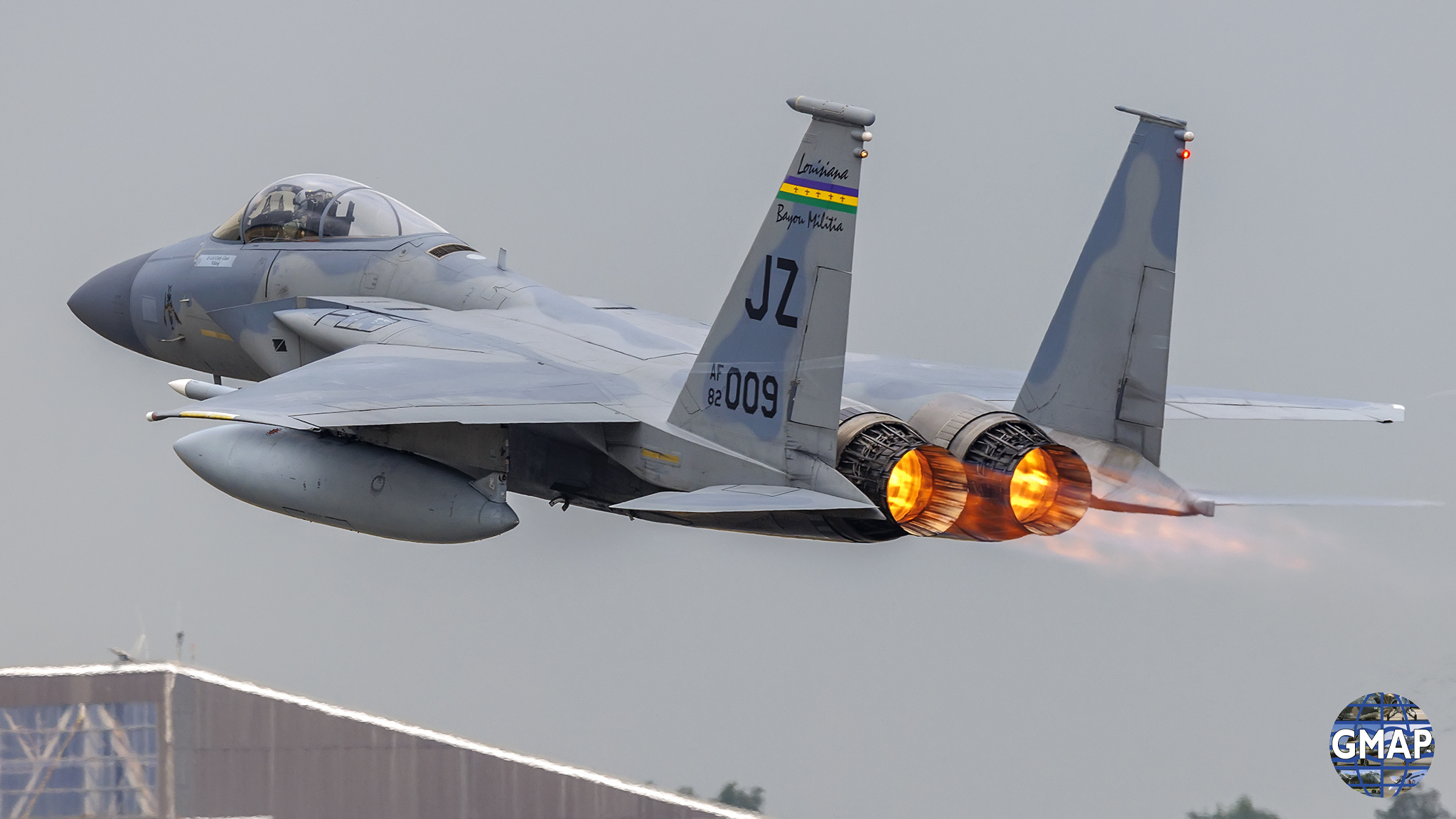INTRODUCTION
The history of Anatolian Eagle (AE) goes back to 2001, when the first exercise was held. Main goals of this multinational exercise are:
- Provide realistic operational training domain
- Enable fighters to execute their tactics
- Provide a platform to exchange ideas
- Keep fighters and GCI controllers current
- Teach how to survive
The ambition is to become the most prestigious and preferred “Tactical Training Centre” in the world. It has become a great opportunity for not only European; but also Middle East countries to train their pilots. In essence, AE is held three times a year: two exercises will only see participants of the Turkish Air Force, while one yearly exercise will also involve international participants.
AE is somewhat similar to the well-known Red Flag exercises that are held in the USA at Nellis AFB; Nevada. Like Red Flag, the participants at AE are divided between Red Forces and Blue Forces. Red Forces are the “training aid” for the Blue fighters; where the visiting units for the Blue forces who will try to execute their game plan; supported by NATO AWACS and/or based E-7T aircraft. The based 135 SQN (or 135 Filo) is providing Combat Search and Rescue (CSAR).
An area as large as 50.000 Sq. mile (altitude range between ground level and 50.00 feet) stretching from the south of Ankara to the Mediterranean south of Alanya is at the disposal of AE to conduct their missions.
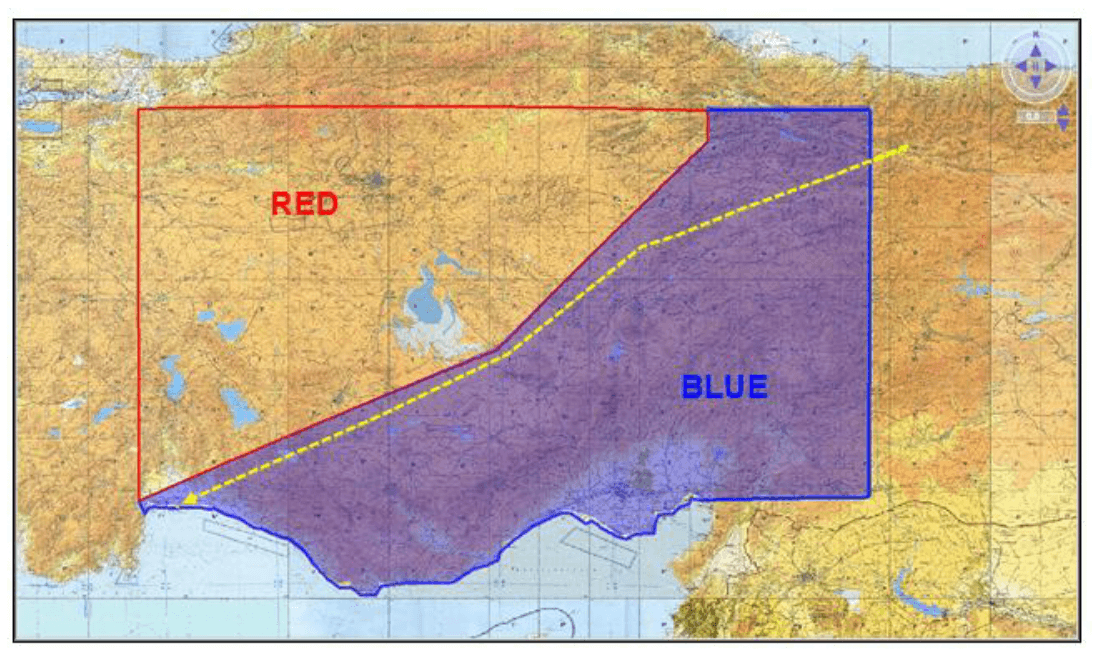
Konya Air Base (home to the third Air Wing – Ana Jet Üssü or AJÜ) is located in the center of the exercise-area in Central Anatolia and as such the ideal location to host AE. The base has a major ramp (the so called “Eagle Ramp”) specifically reserved for AE visitors. It houses various dedicated buildings for both Blue and Red forces; providing the participants of AE all the services they require. The Anatolian Eagle Training Center is located at the 3rd Main Jet Base-Konya and is a high level tactical training center, providing realistic combat training opportunities.
So far, fifteen countries have participated in Anatolian Eagle training, including Belgium, France, Germany, The Netherlands, Israel, Italy, Jordan, Qatar, Pakistan, Saudi Arabia, Spain, Turkey, United Arab Emirates, United Kingdom, U.S.A, Azerbaijan as well as NATO.
The different missions performed by the participating units during Anatolian Eagle are:
- Combat Air Patrol (CAP), Fighter sweep and Fighter escort
- Suppression/destruction of Enemy Air Defences (SEAD)
- Close Air Support (CAS)
- Combat Search and Rescue (CSAR)
- Air-to-ground attack
- High value asset protection
- Reconnaissance
- Slow mover protection
Since the establishment in 2001, 43 Anatolian Eagle trainings have been performed and more then 33.000 military personal and more then 2000 planes participated. All these aircraft executed arround 24.000 sorties in the dedicated military training area.
Anatolian Eagle 2023: Advancing Multinational Air Combat Readiness
Introduction The 2023 edition of Anatolian Eagle, one of the world’s most comprehensive multinational military exercises, was conducted from May 5 to 12 at the 3rd Main Jet Base Command in Konya, Turkey. Organized by the Anatolian Eagle Training Centre, the exercise provided an immersive, high-intensity combat training environment for participating air forces. This iteration was particularly notable for its focus on advanced tactical scenarios, real-time mission execution, and enhanced interoperability among allied and partner nations.
The exercise also served as a platform for integrating new technologies, testing advanced combat strategies, and reinforcing joint operational readiness in complex combat environments. With the growing importance of multi-domain operations, Anatolian Eagle 2023 included not only aerial engagements but also cyber and electronic warfare elements, further enhancing its scope.
Historical Context and Strategic Objectives Since its inception in 2001, Anatolian Eagle has been a cornerstone exercise for developing combat readiness and joint operational capabilities. Modeled after renowned air combat exercises like Red Flag, it offers aircrews a realistic environment to hone their skills in complex, high-threat scenarios. The primary objectives of Anatolian Eagle include:
- Strengthening joint operational planning and execution
- Enhancing coordination in multinational air operations
- Testing and improving pilot survivability in high-threat environments
- Refining precision strike and air defense suppression tactics
- Integrating emerging warfare technologies such as artificial intelligence-assisted decision-making and electronic warfare countermeasures
The exercise leverages cutting-edge training tools, including the Air Combat Maneuvering Instrumentation (ACMI) system and the Mission Evaluation System, which provide real-time analytics and post-mission assessments to optimize performance.
Participating Nations and Aircraft Anatolian Eagle 2023 featured six participating nations and over 55 aircraft, representing a diverse array of air combat capabilities. The participating forces and their respective aircraft included:
- Turkish Air Force: 34x F-16 Fighting Falcons, 4x F-4E Terminators, E-7T AWACS, Anka-S UAV, Akinci Combat UAV
- Azerbaijani Air Force: 3x Su-25 close air support aircraft
- Royal Air Force (United Kingdom): 4x Eurofighter Typhoons
- Pakistan Air Force: 5x F-16s
- United Arab Emirates Air Force: 4x F-16s
- Qatar Emiri Air Force: 5x Eurofighter Typhoons
- NATO: E-3 AWACS for airborne early warning and control
Military observers from the United States, Australia, Ethiopia, Morocco, France, Georgia, Sweden, Kyrgyzstan, North Macedonia, Libya, Malaysia, and Oman also attended the exercise, highlighting its growing global significance.
Notably, this year’s exercise also included joint refueling operations, electronic attack drills, and collaborative intelligence-sharing initiatives, reinforcing the necessity of information dominance in modern air combat.
Training Missions and Tactical Scenarios The exercise encompassed a variety of high-intensity missions aimed at testing and refining the capabilities of participating forces. These included:
- Air Superiority and Defensive Counter-Air Operations: Simulated engagements with aggressive air threats, requiring pilots to execute split-second tactical decisions.
- Composite Air Operations (COMAO): Large-scale coordinated air strikes and close air support missions integrating multiple air assets.
- Suppression of Enemy Air Defenses (SEAD): Targeting and neutralizing simulated enemy radar and missile sites.
- Close Air Support (CAS) Missions: Coordinated operations between air and ground forces for precision strikes.
- Combat Search and Rescue (CSAR): High-risk recovery missions for downed pilots in hostile territory.
- Dynamic Targeting and Precision Strikes: Real-time engagement of high-value enemy assets using precision-guided munitions.
- Electronic Warfare Training: Testing electronic attack and defensive countermeasures in a contested electromagnetic environment.
The Azerbaijani Air Force played a particularly significant role, employing their Su-25BM aircraft equipped with Turkish-developed KGK wing-assisted guidance kits, demonstrating the effectiveness of extended-range air-to-ground strike capabilities.
Execution and Performance Evaluation Anatolian Eagle follows a structured training methodology, ensuring each participating force gains exposure to leading and executing complex air operations. Key aspects of execution include:
- Teams were divided into Blue and Red forces, simulating real-world adversarial conditions.
- Mission complexity increased throughout the exercise, pushing aircrews to adapt to evolving threats and tactical scenarios.
- Over 200 sorties were flown, targeting 80 key objective points, with each mission rigorously analyzed using ACMI and real-time telemetry systems.
- Multi-domain simulations, including the integration of cyber warfare components, were introduced to enhance operational depth.
The ability to train in an environment with live adversaries and networked mission planning systems enabled participants to refine their combat skills under near-real conditions. Additionally, live weapon engagements were conducted in designated testing zones, providing pilots with hands-on experience in using precision-guided munitions in combat-like environments.
Strategic Importance and Future Outlook Lieutenant Colonel Hakan Girgin, Commander of the Anatolian Eagle Training Squadron, emphasized the significance of this multinational exercise, stating:
“Anatolian Eagle provides an unparalleled opportunity for allied and partner nations to enhance operational integration, refine combat tactics, and foster strategic military cooperation.”
The success of Anatolian Eagle 2023 reaffirms Turkey’s role as a key facilitator of global air power cooperation. As aerial warfare continues to evolve with advancements in stealth technology, artificial intelligence, and electronic warfare, future iterations of Anatolian Eagle are expected to integrate these innovations, further enhancing its value as a premier combat training platform.
The increasing emphasis on cyber and electronic warfare capabilities highlights the growing complexity of modern conflicts, and Anatolian Eagle aims to remain at the forefront by incorporating real-time data-sharing, network-centric warfare concepts, and advanced autonomous aerial systems into future exercises.
Conclusion Anatolian Eagle 2023 once again demonstrated the importance of multinational air combat collaboration. By replicating modern battle conditions and fostering joint operational readiness, the exercise remains a vital element in the continuous development of global airpower capabilities. With each iteration, Anatolian Eagle cements its reputation as a leading multinational military exercise, preparing allied and partner forces for the challenges of contemporary and future air warfare.
As military strategies evolve, future editions of Anatolian Eagle will likely feature greater reliance on artificial intelligence-driven mission planning, unmanned aerial combat systems, and further integration of cyber warfare tactics, ensuring that participating nations remain ahead of emerging threats in an increasingly complex global security landscape.

